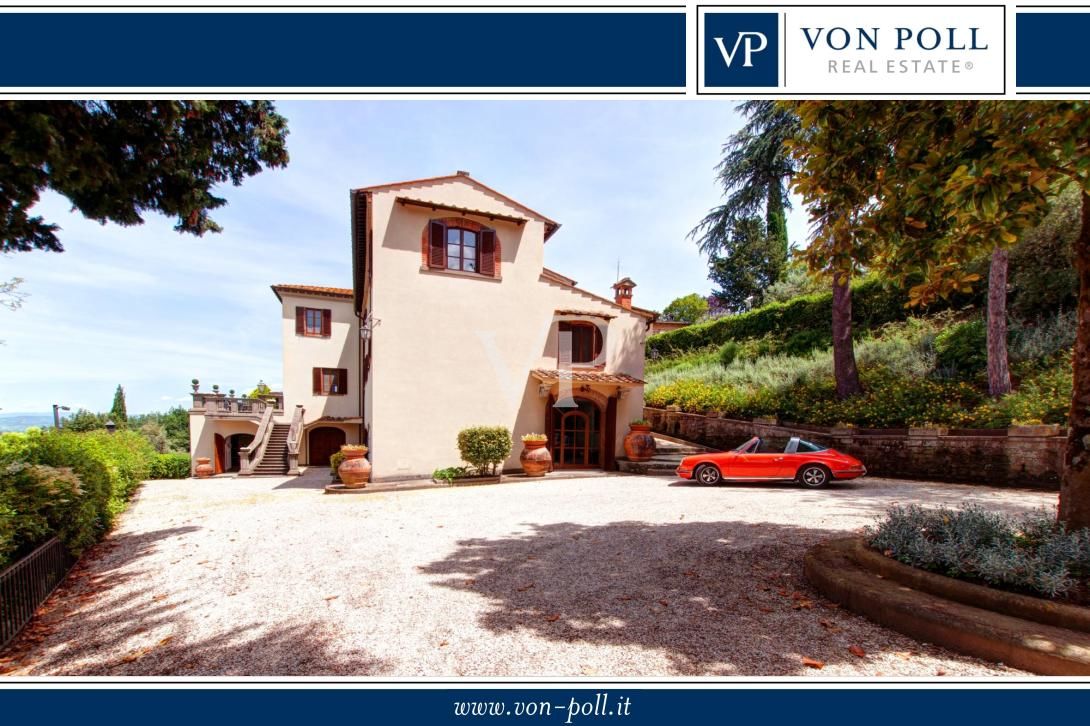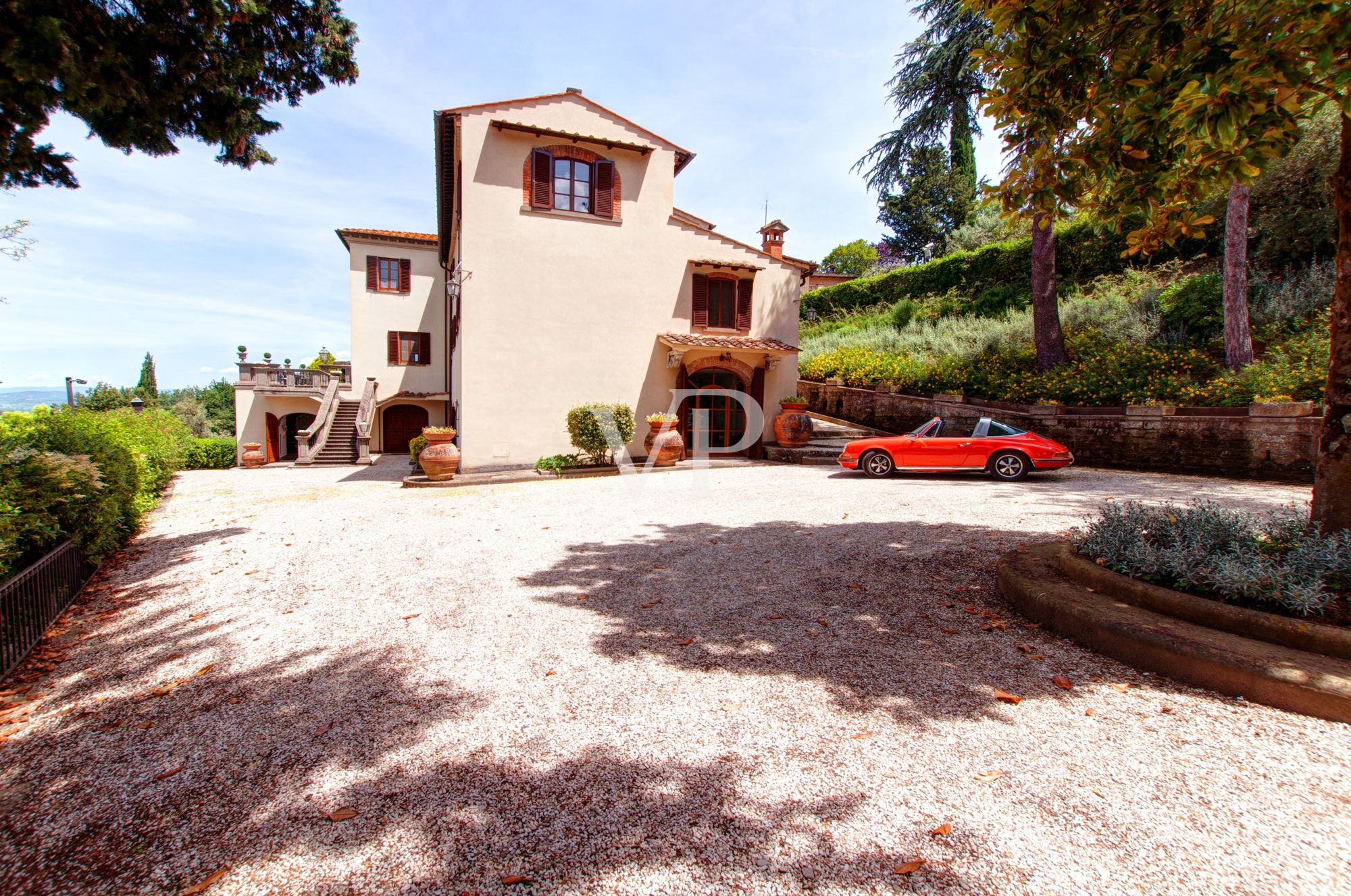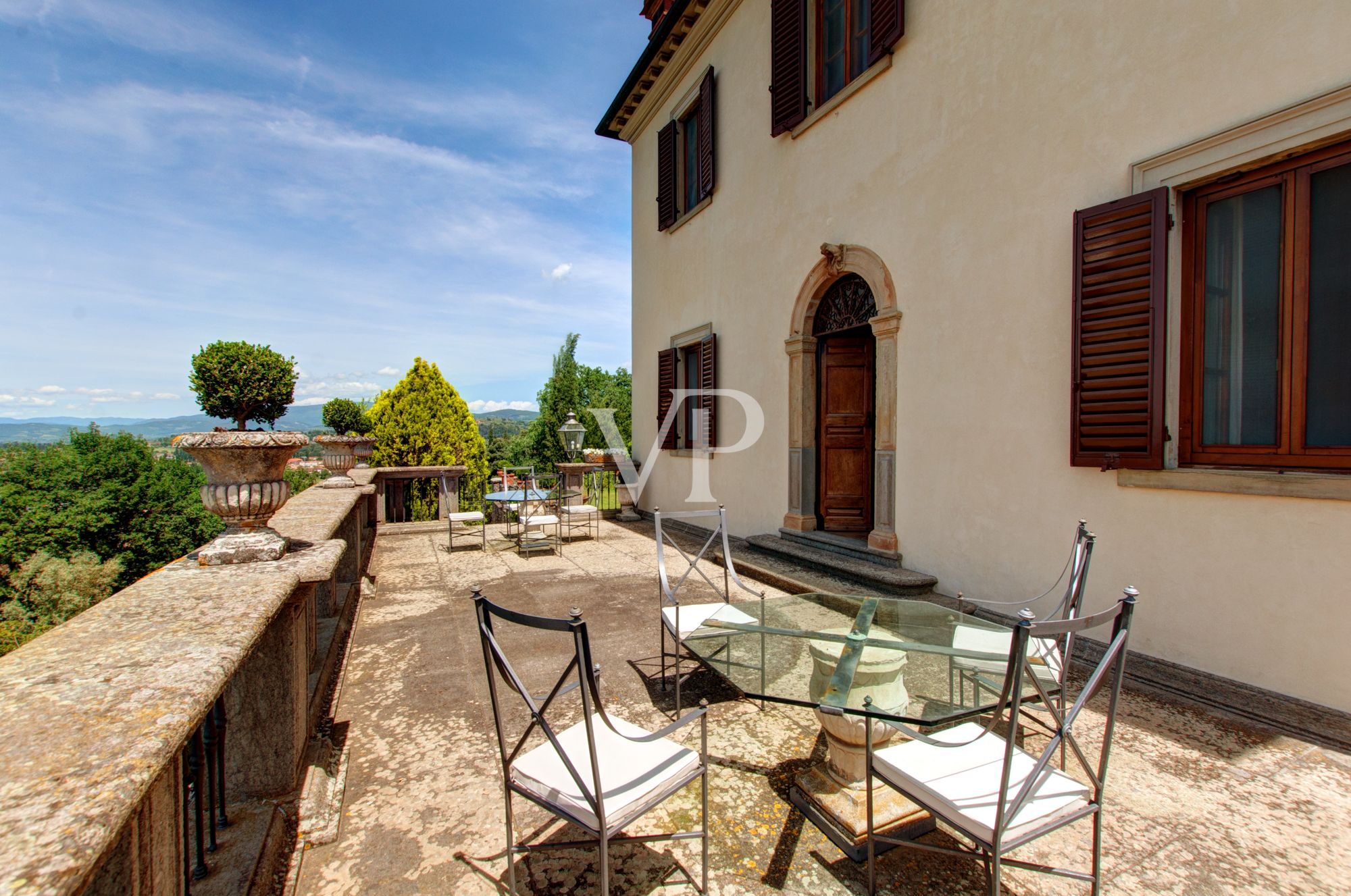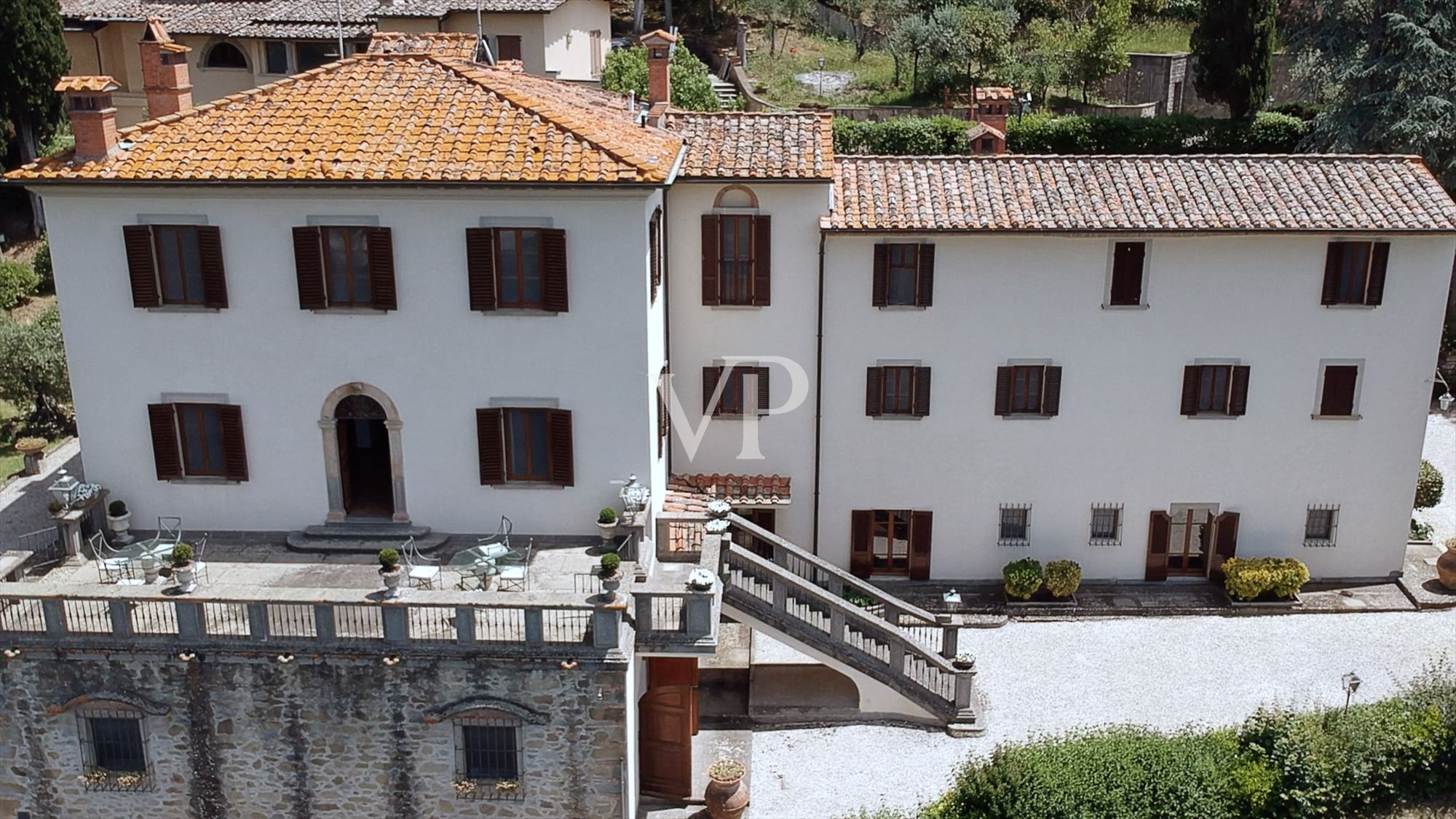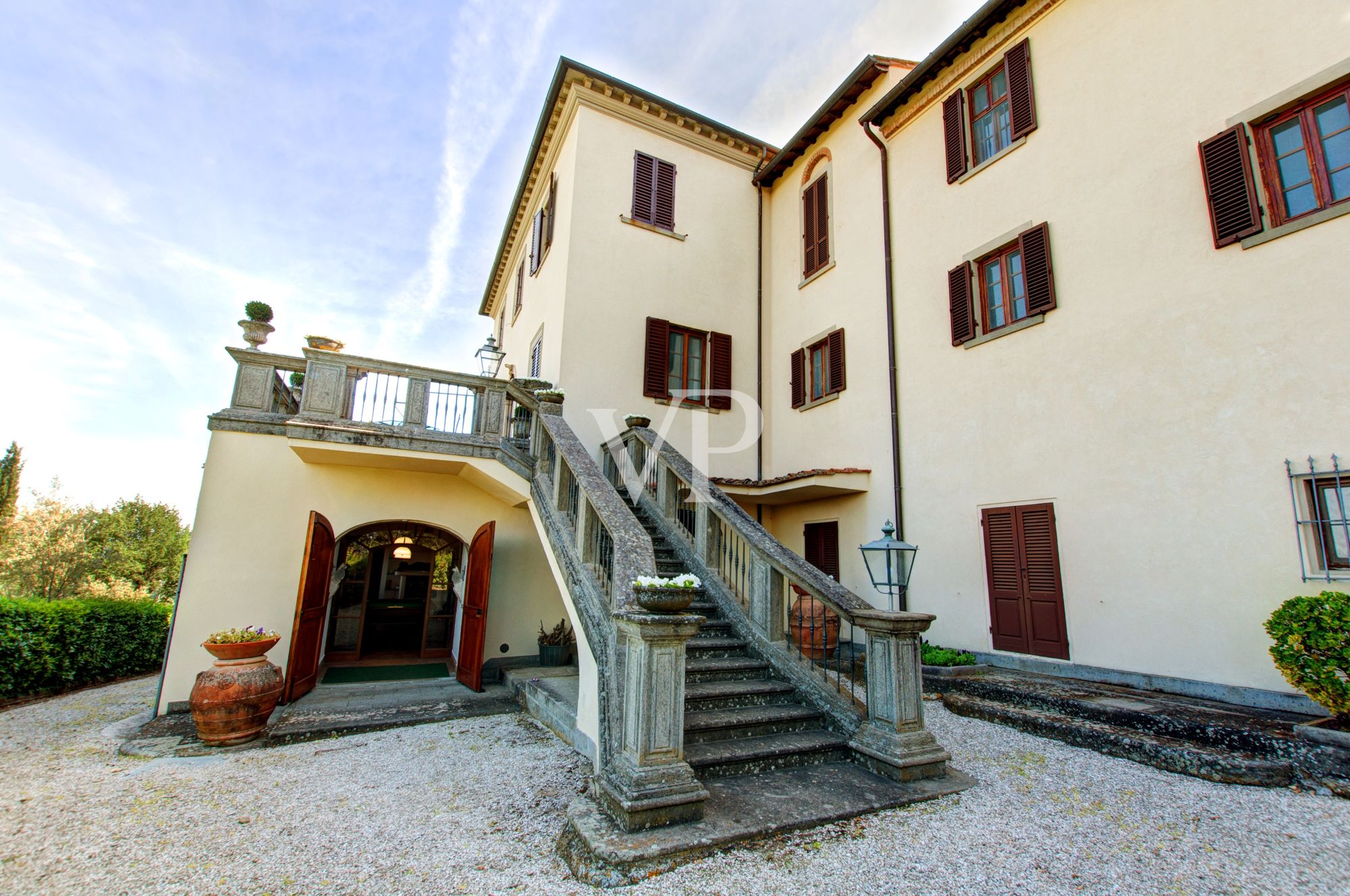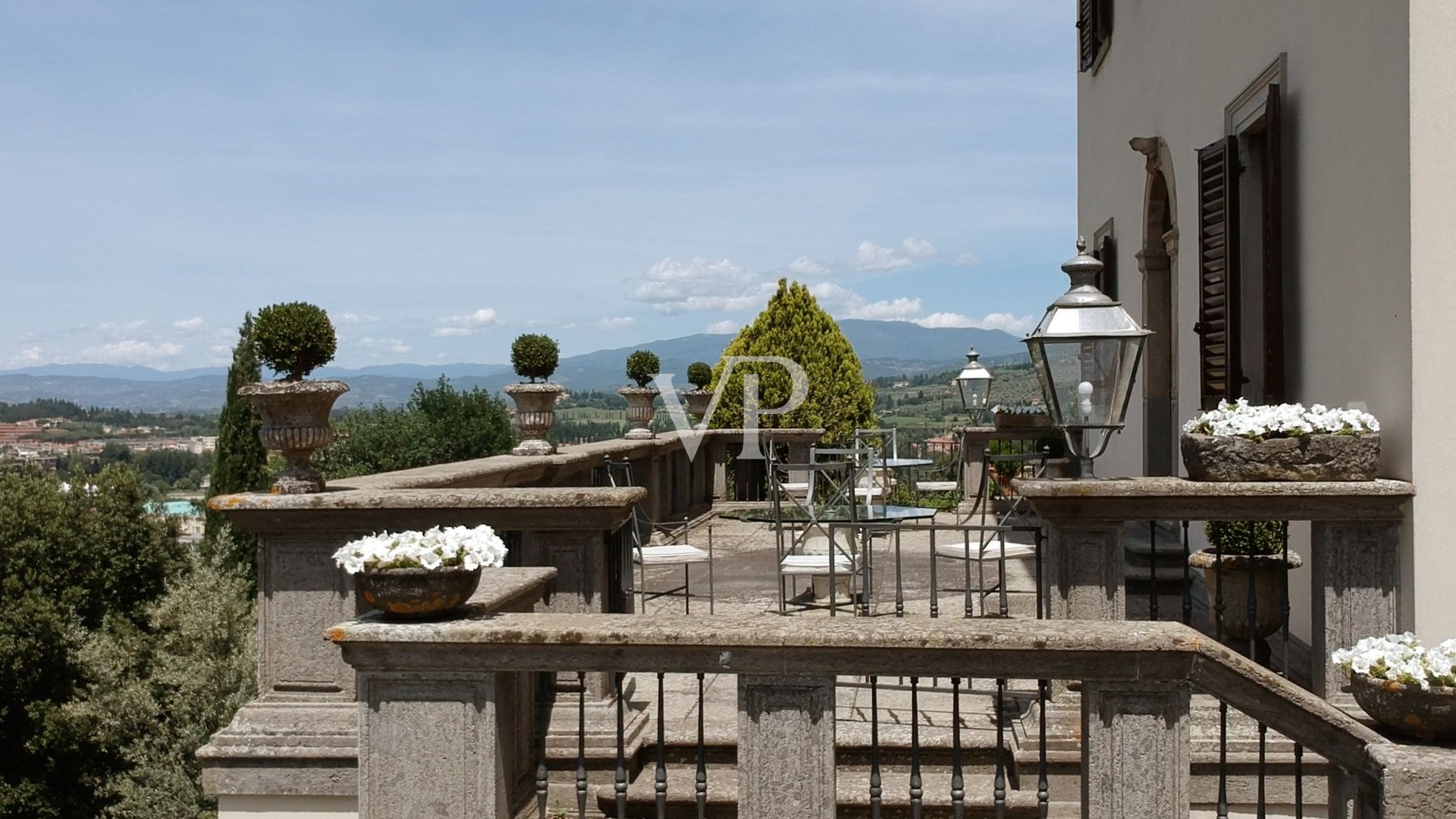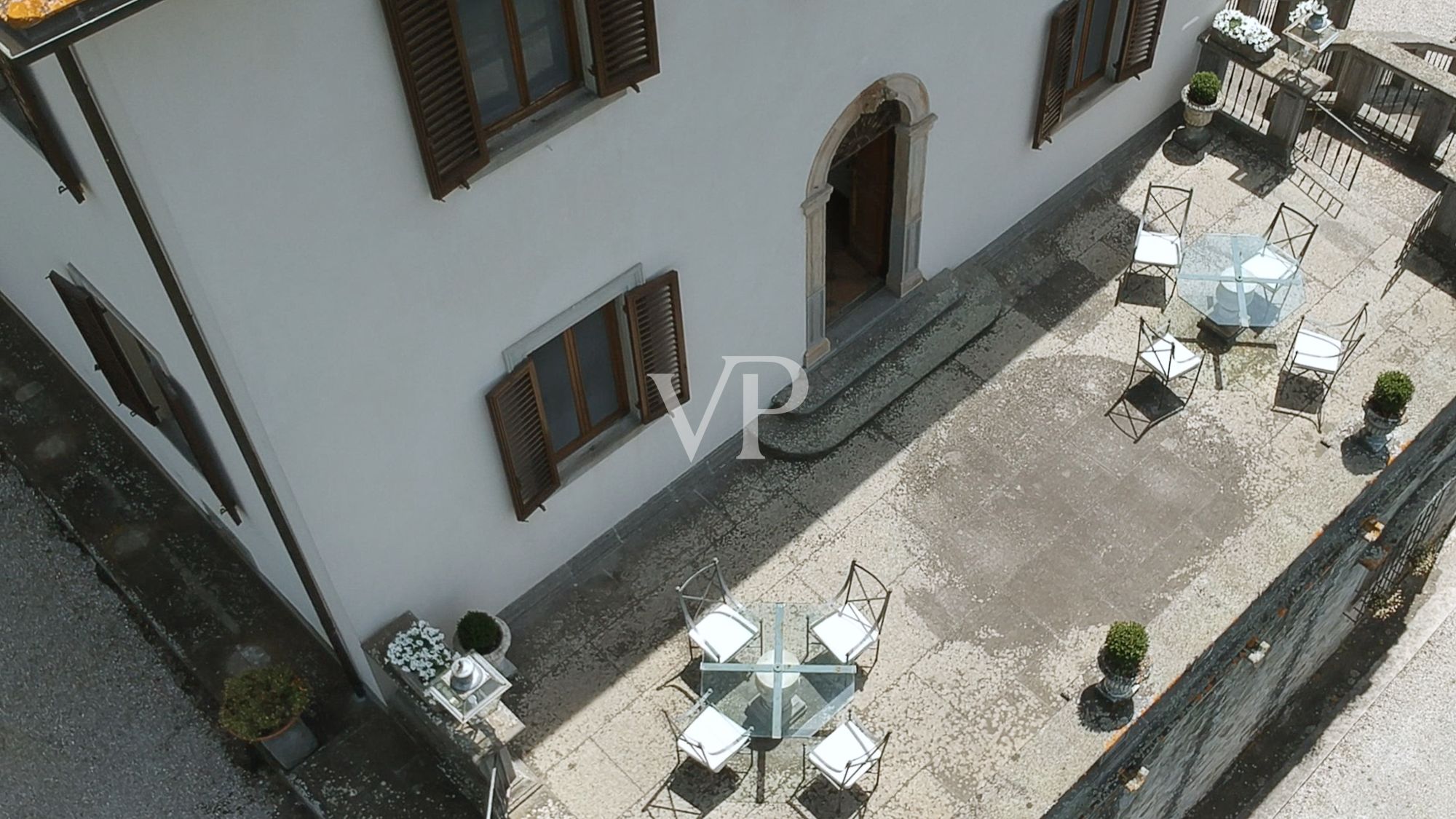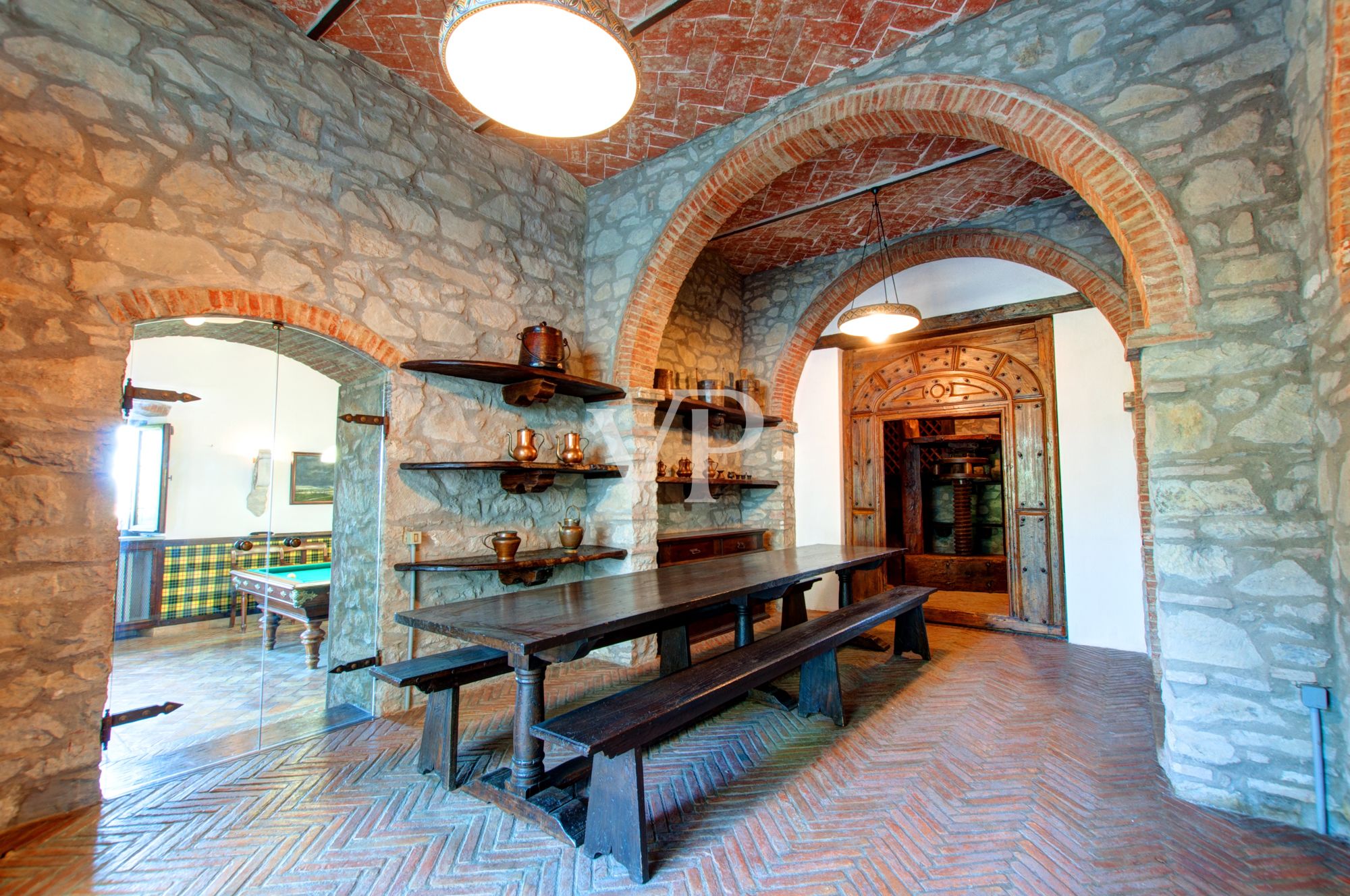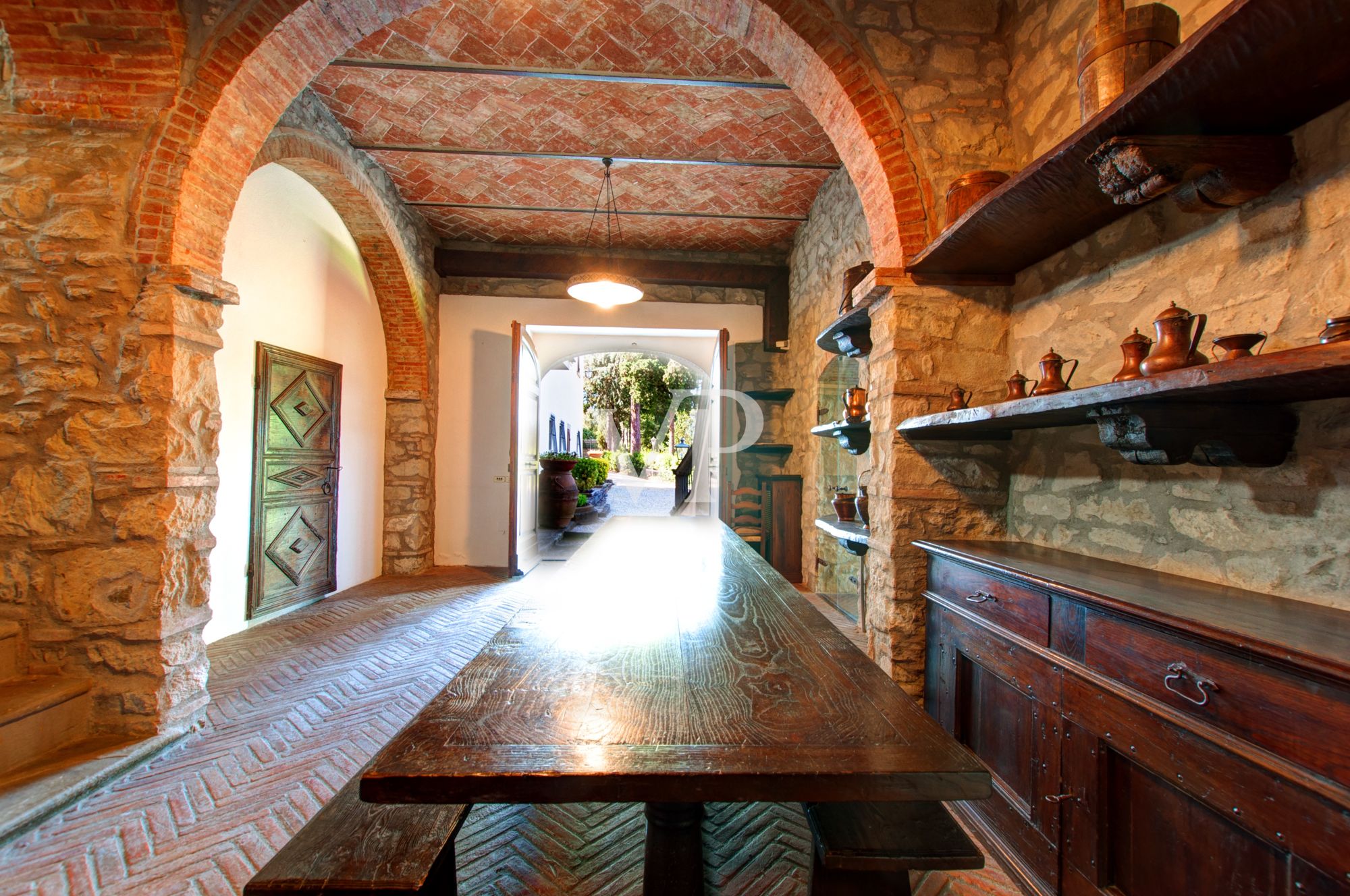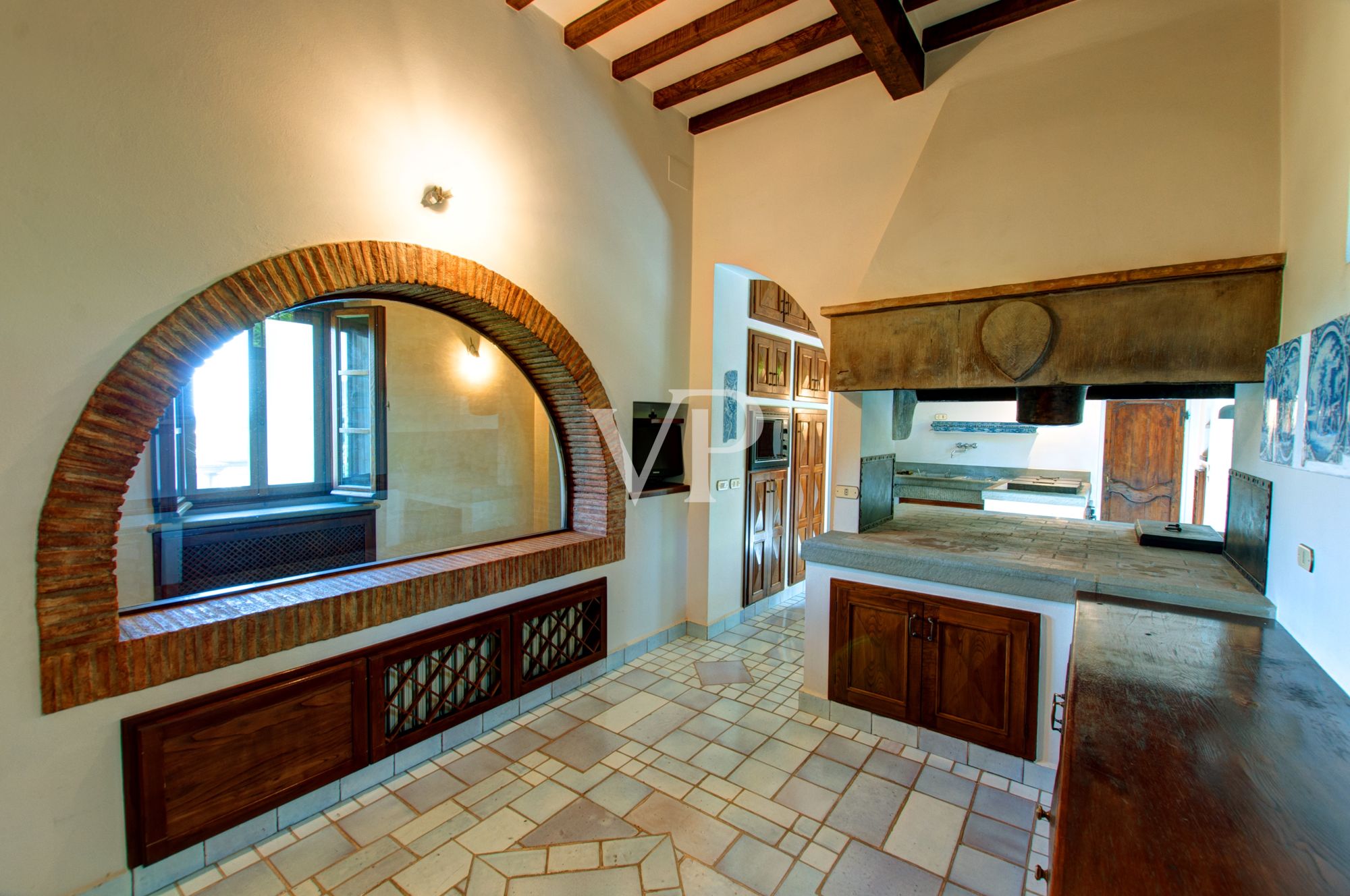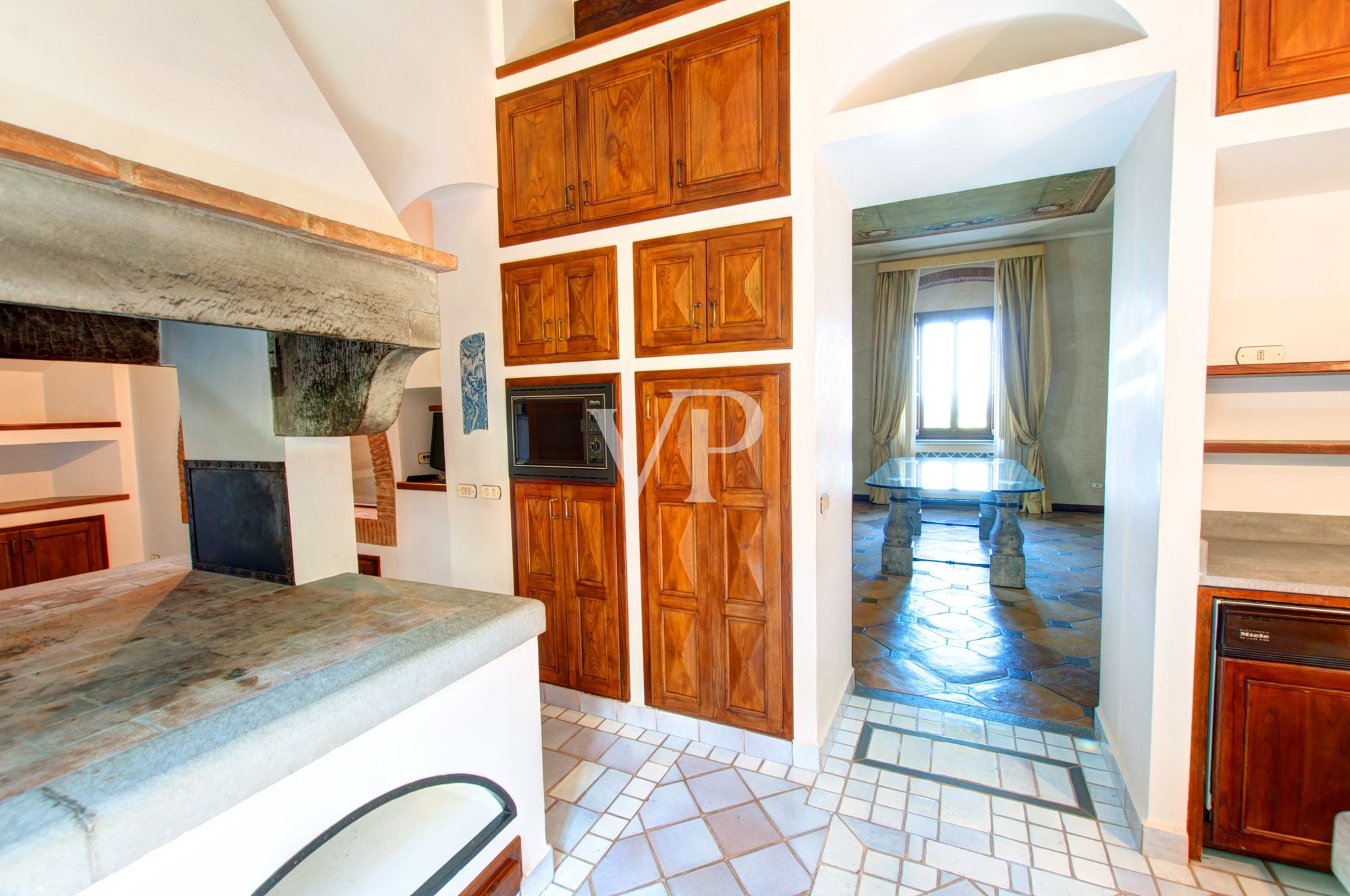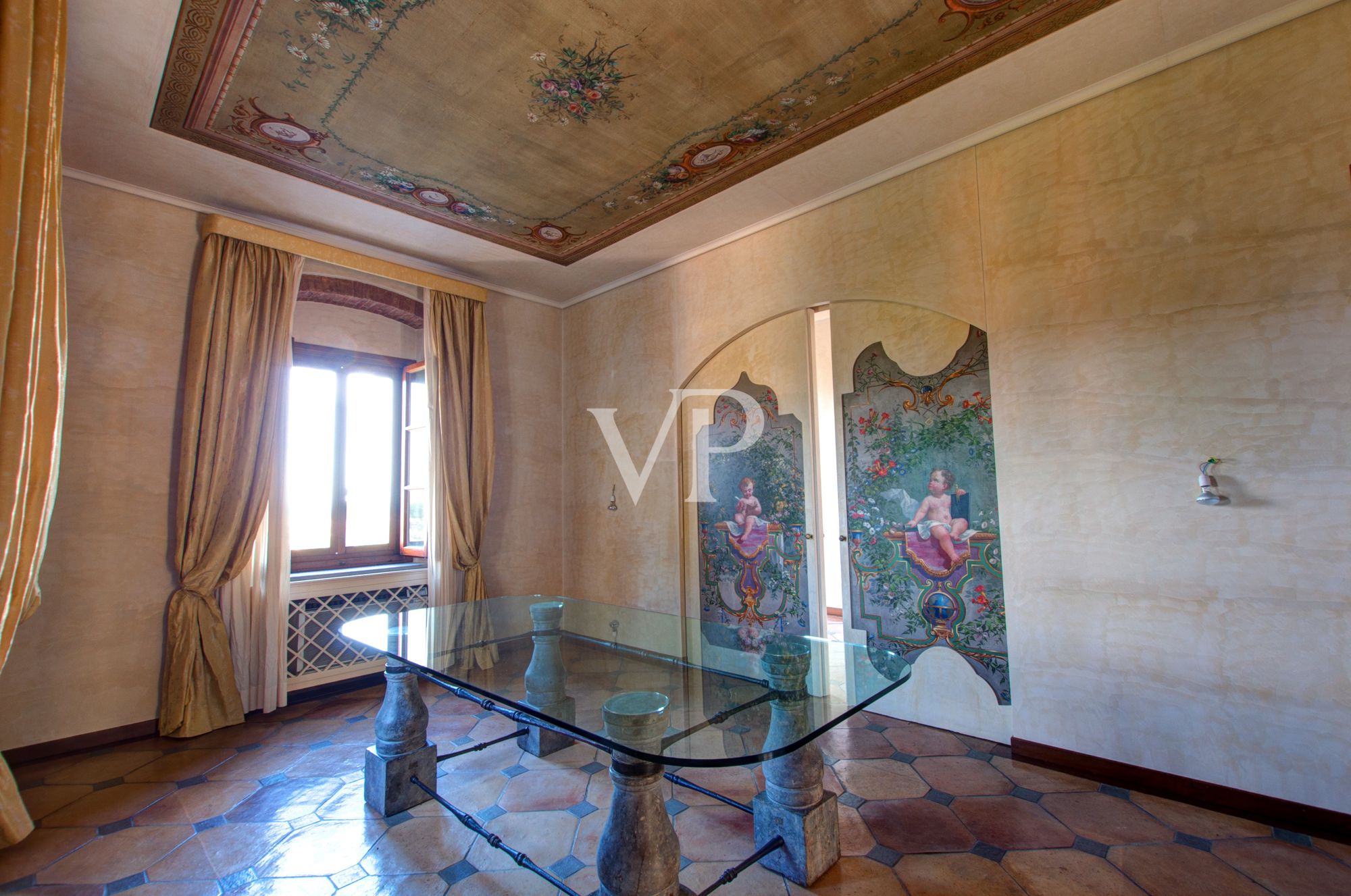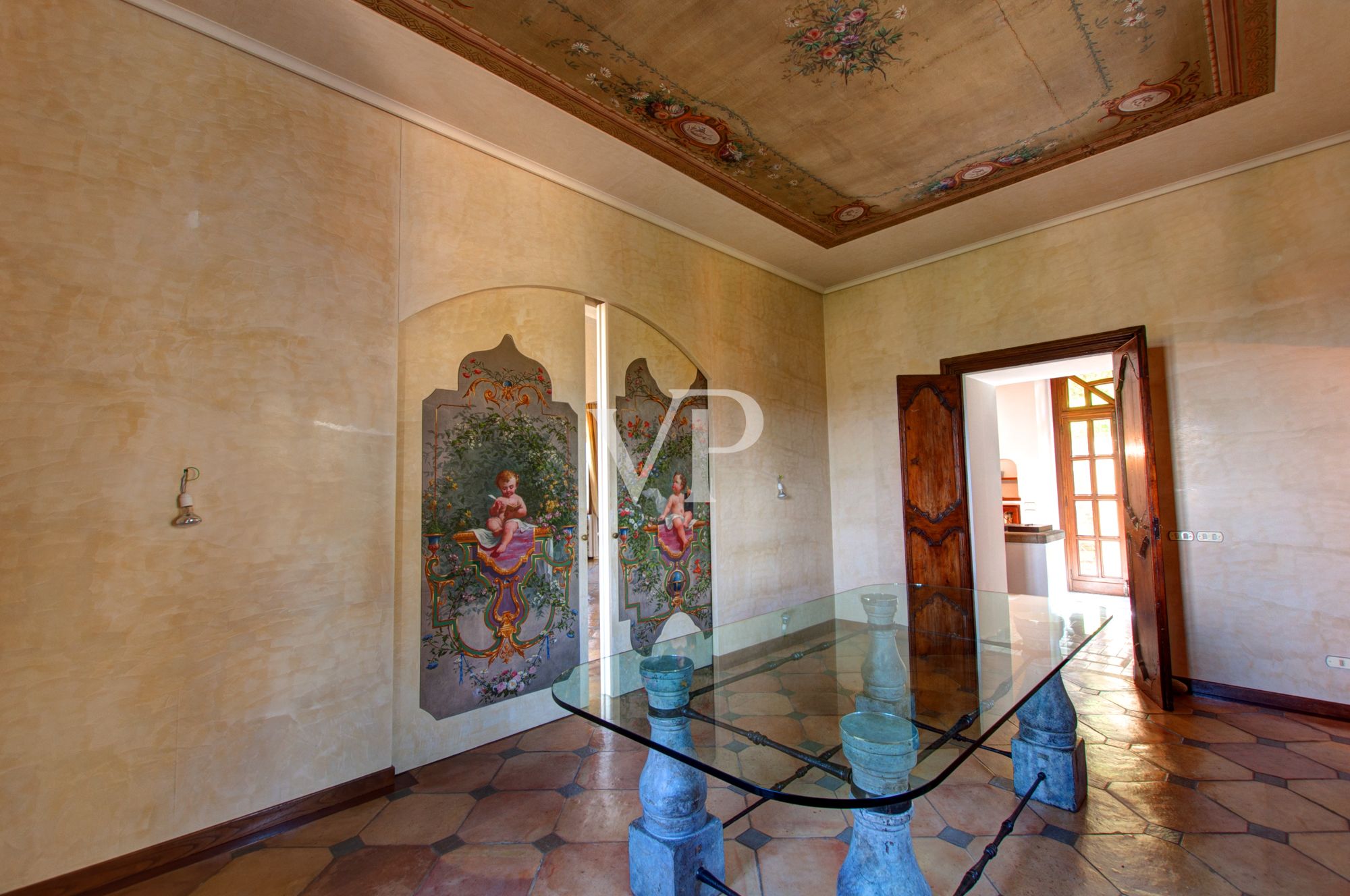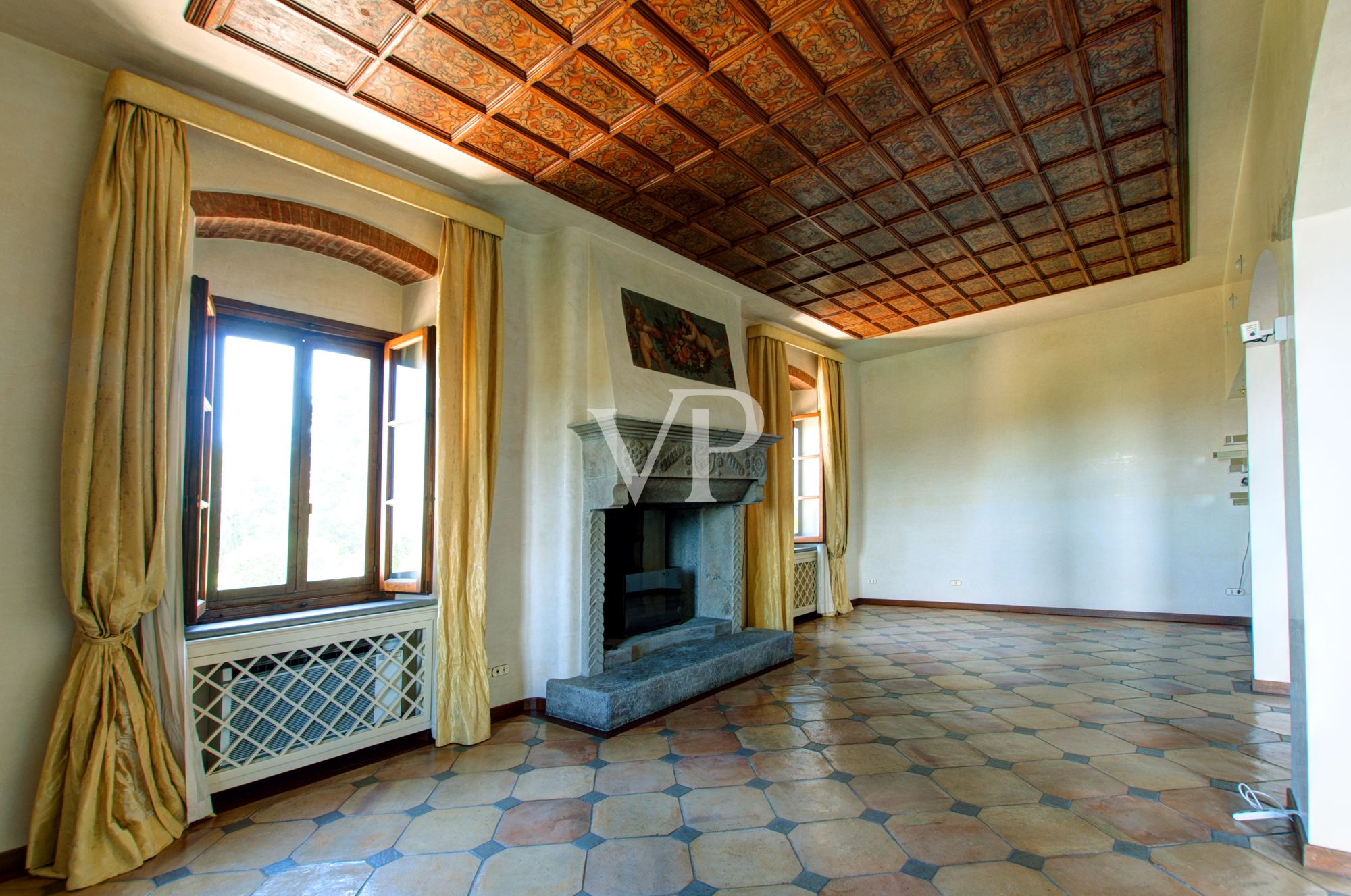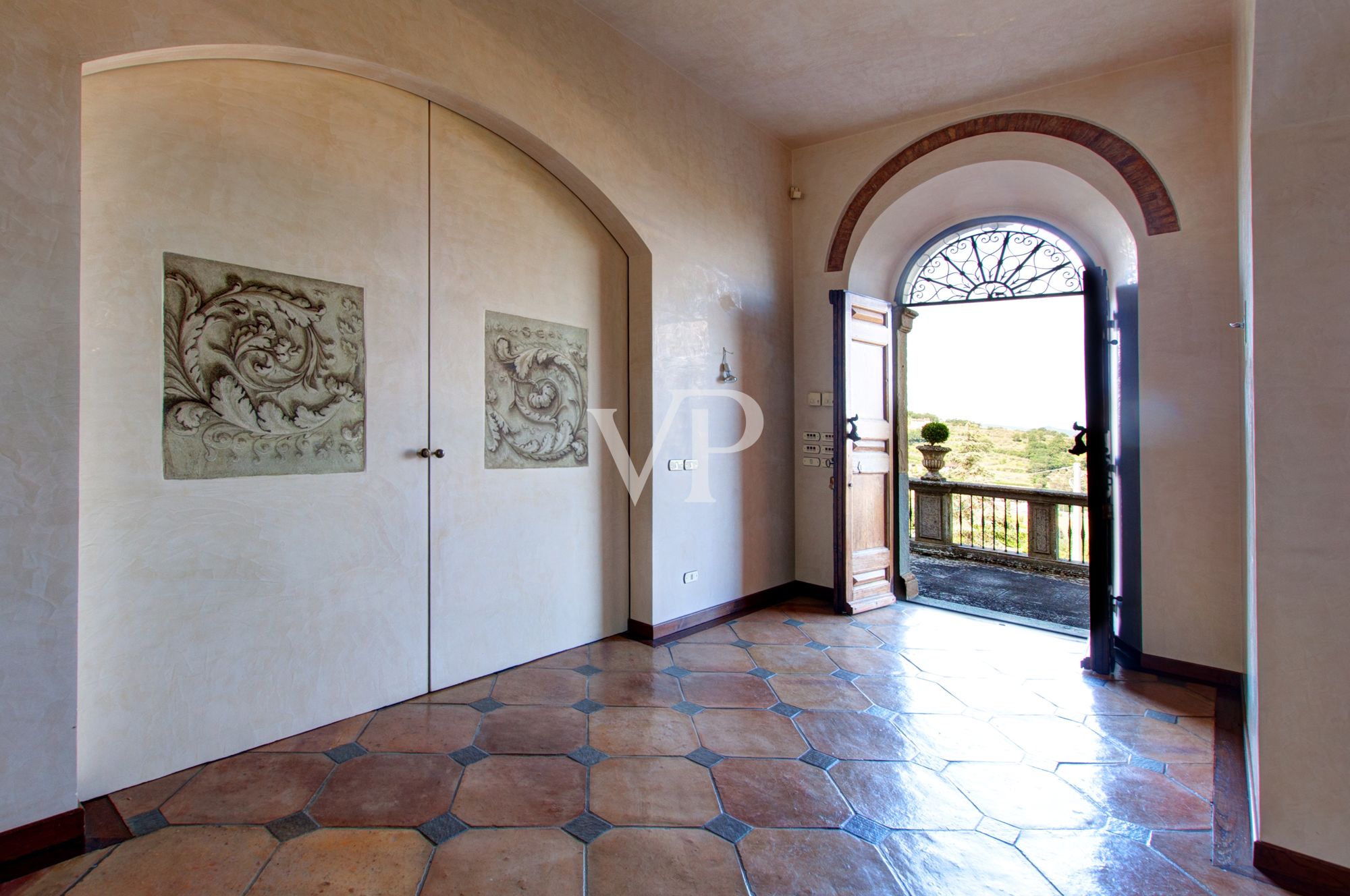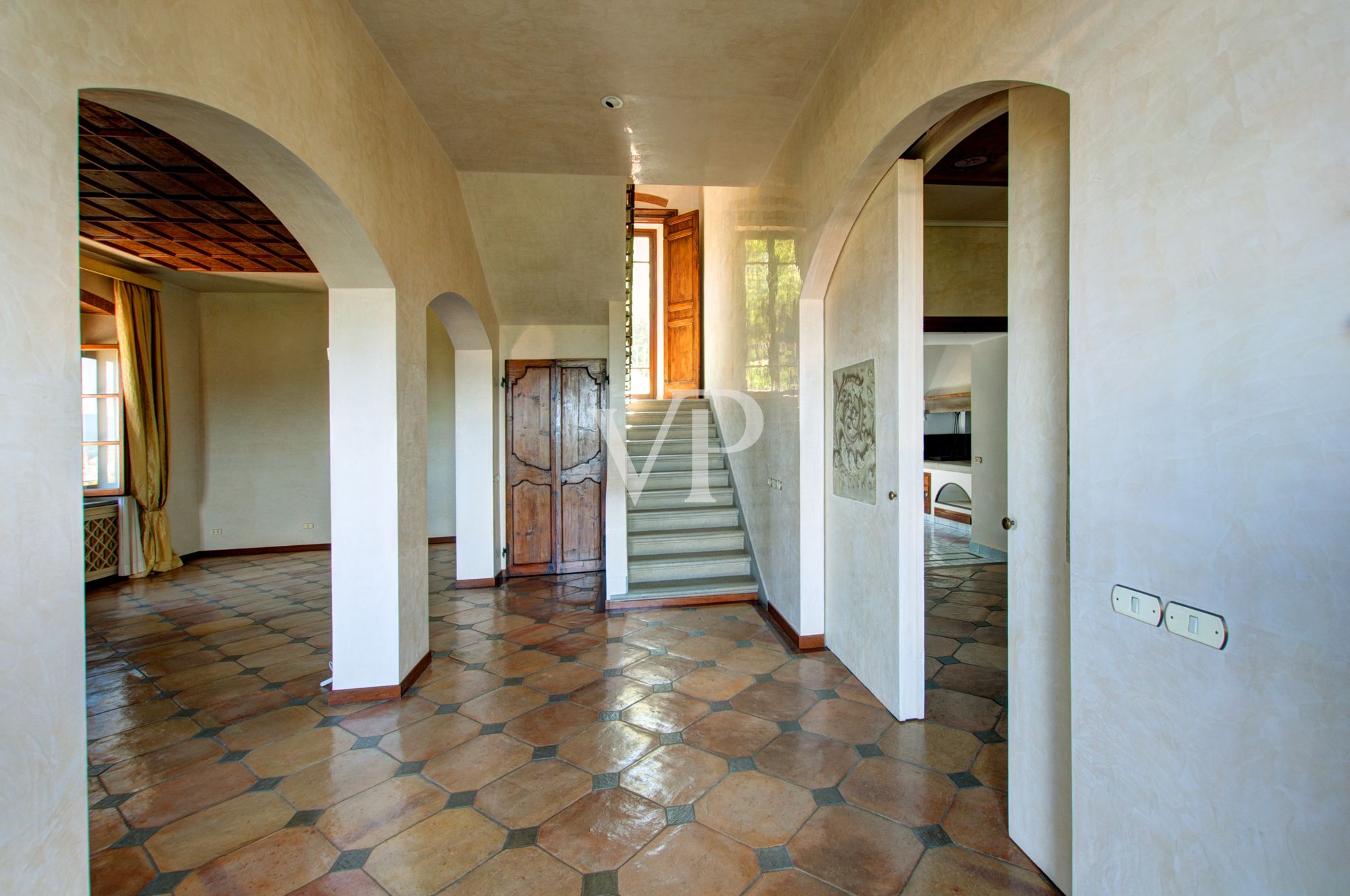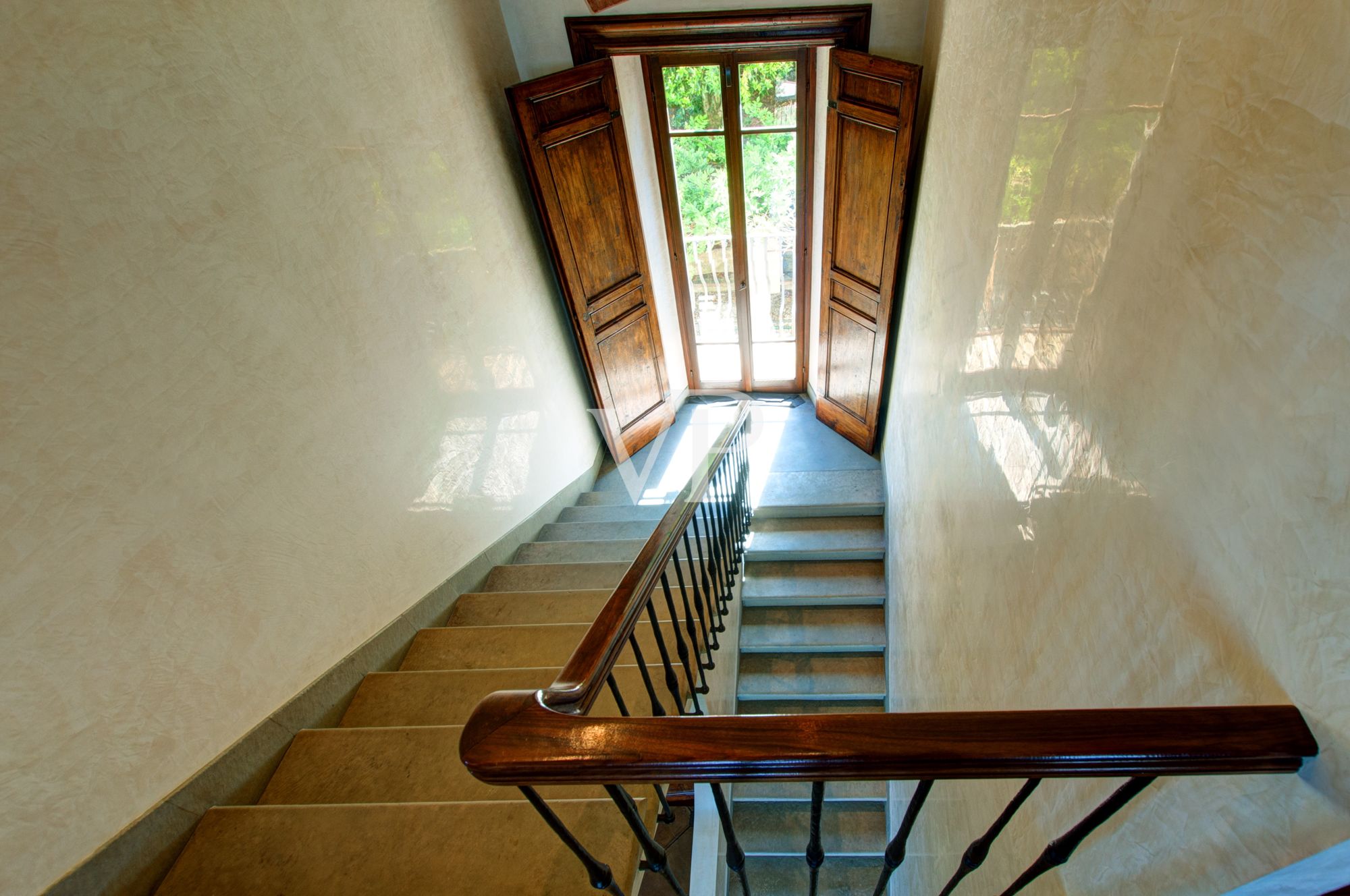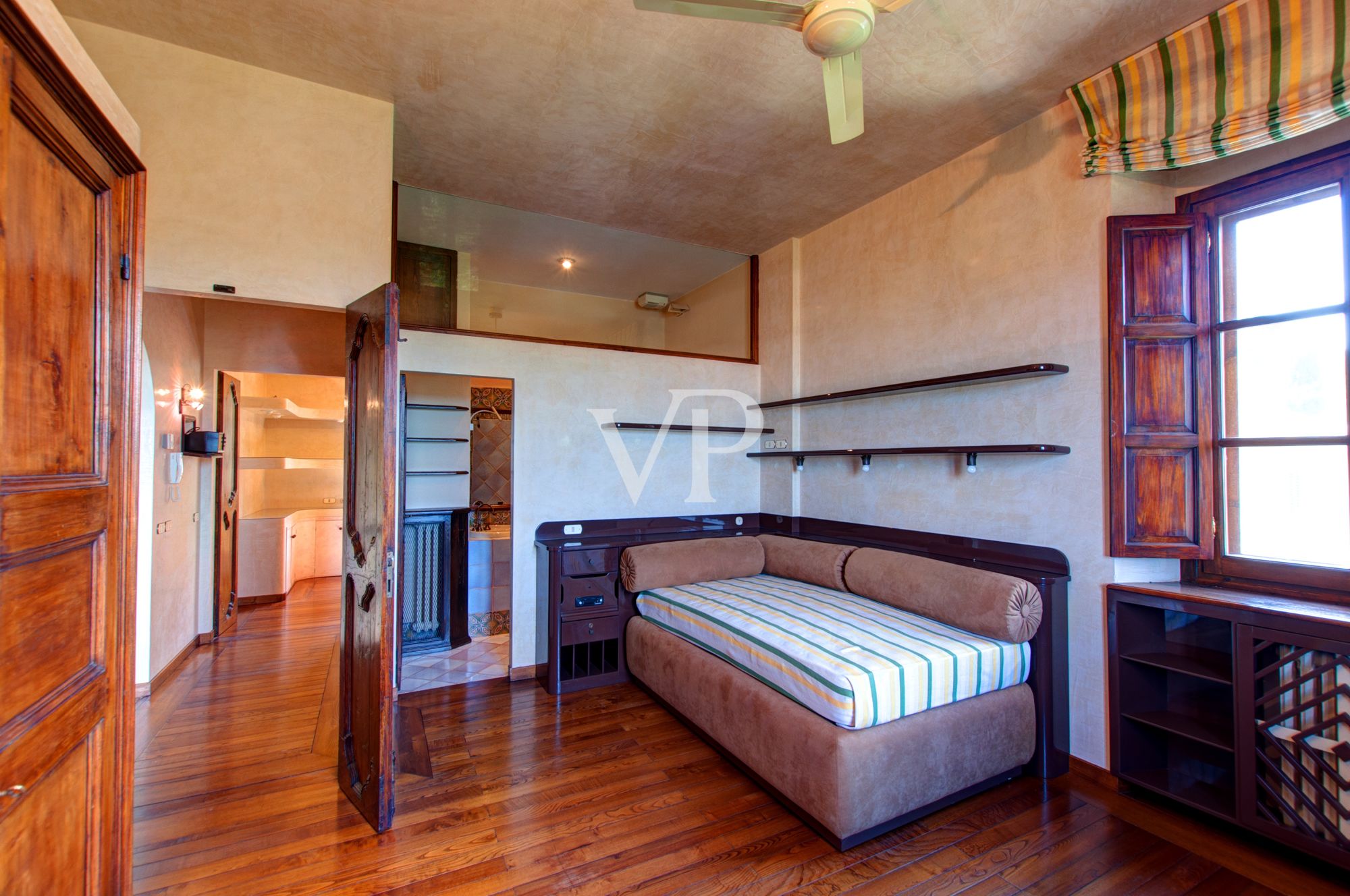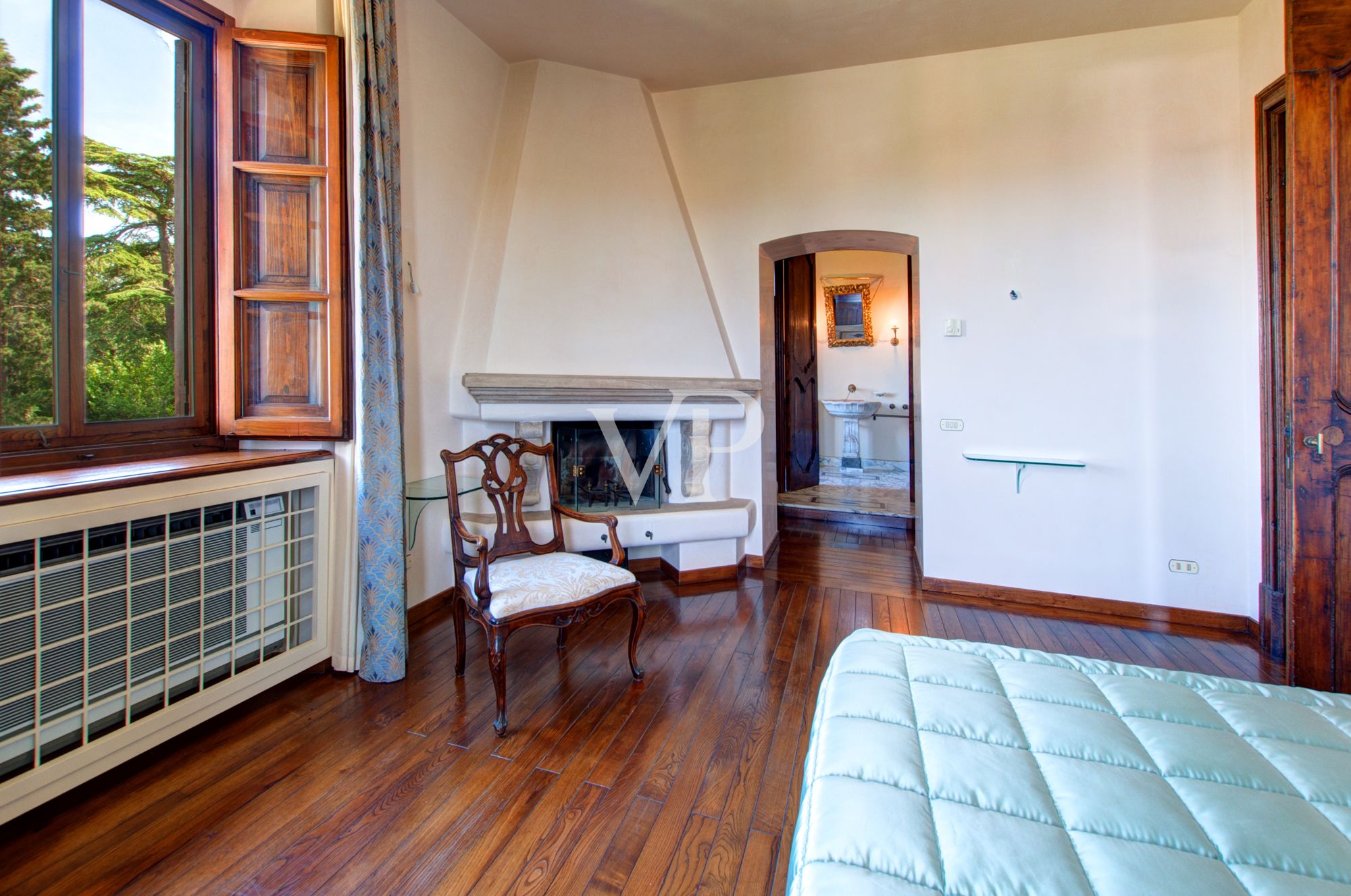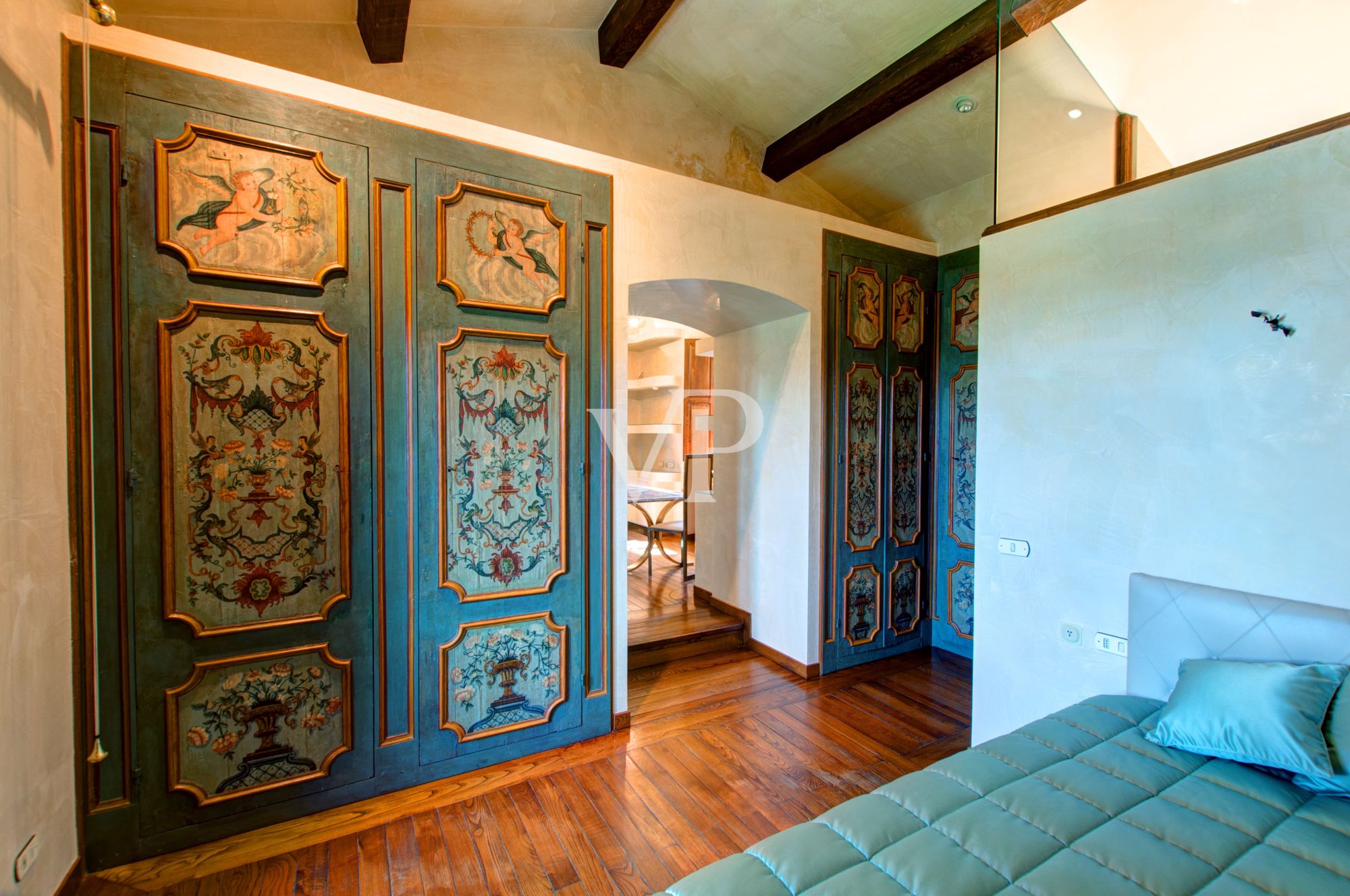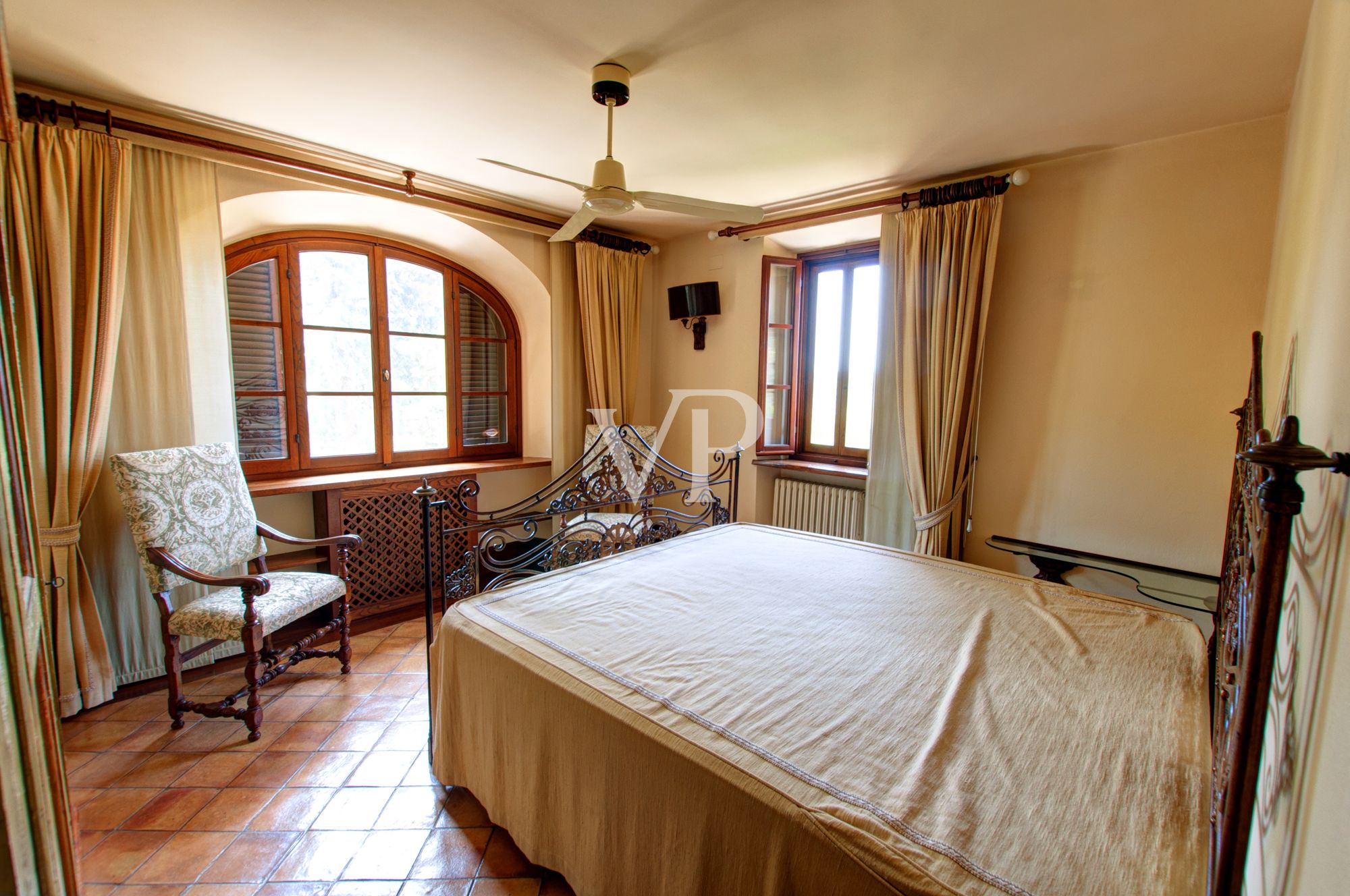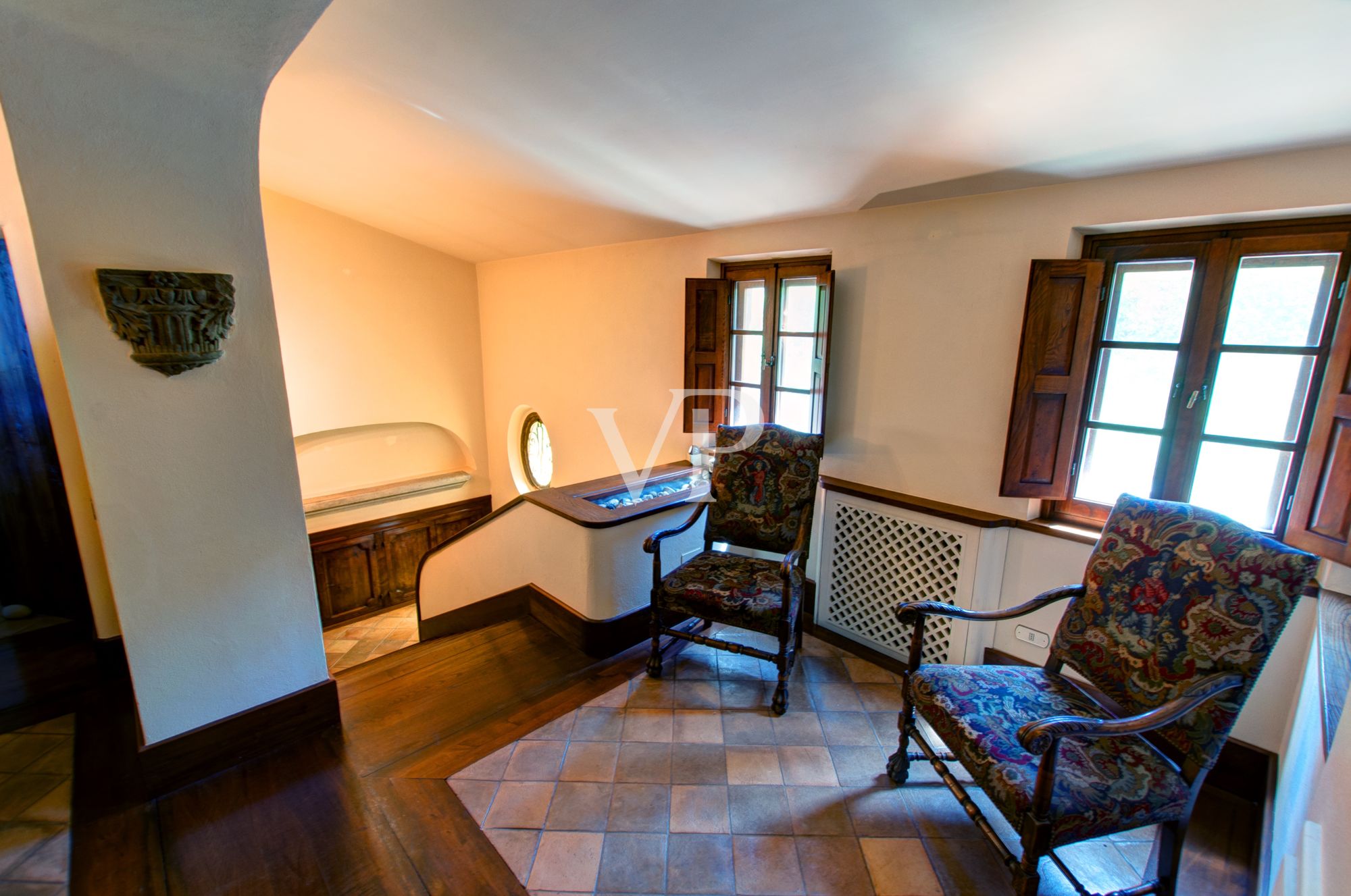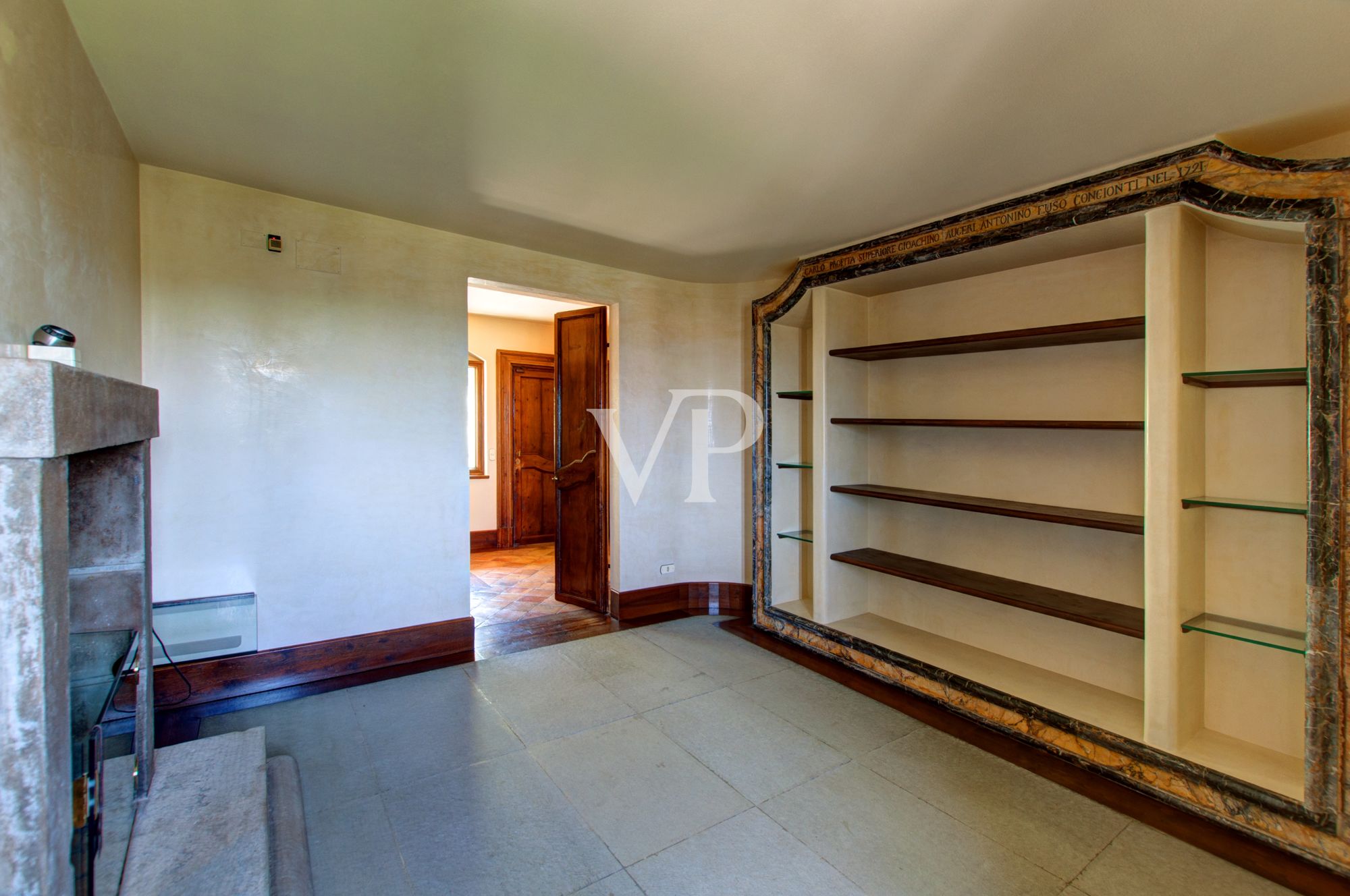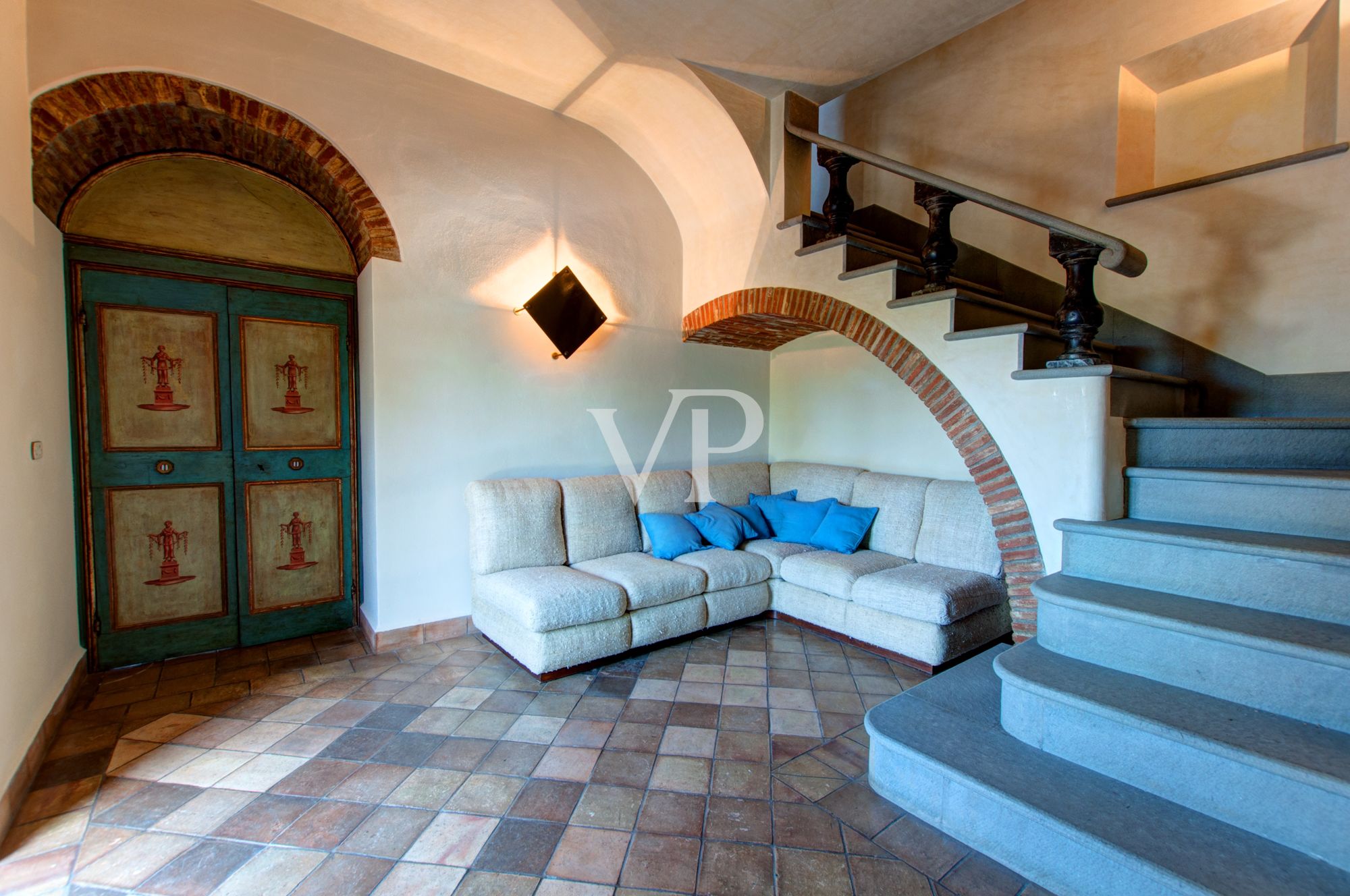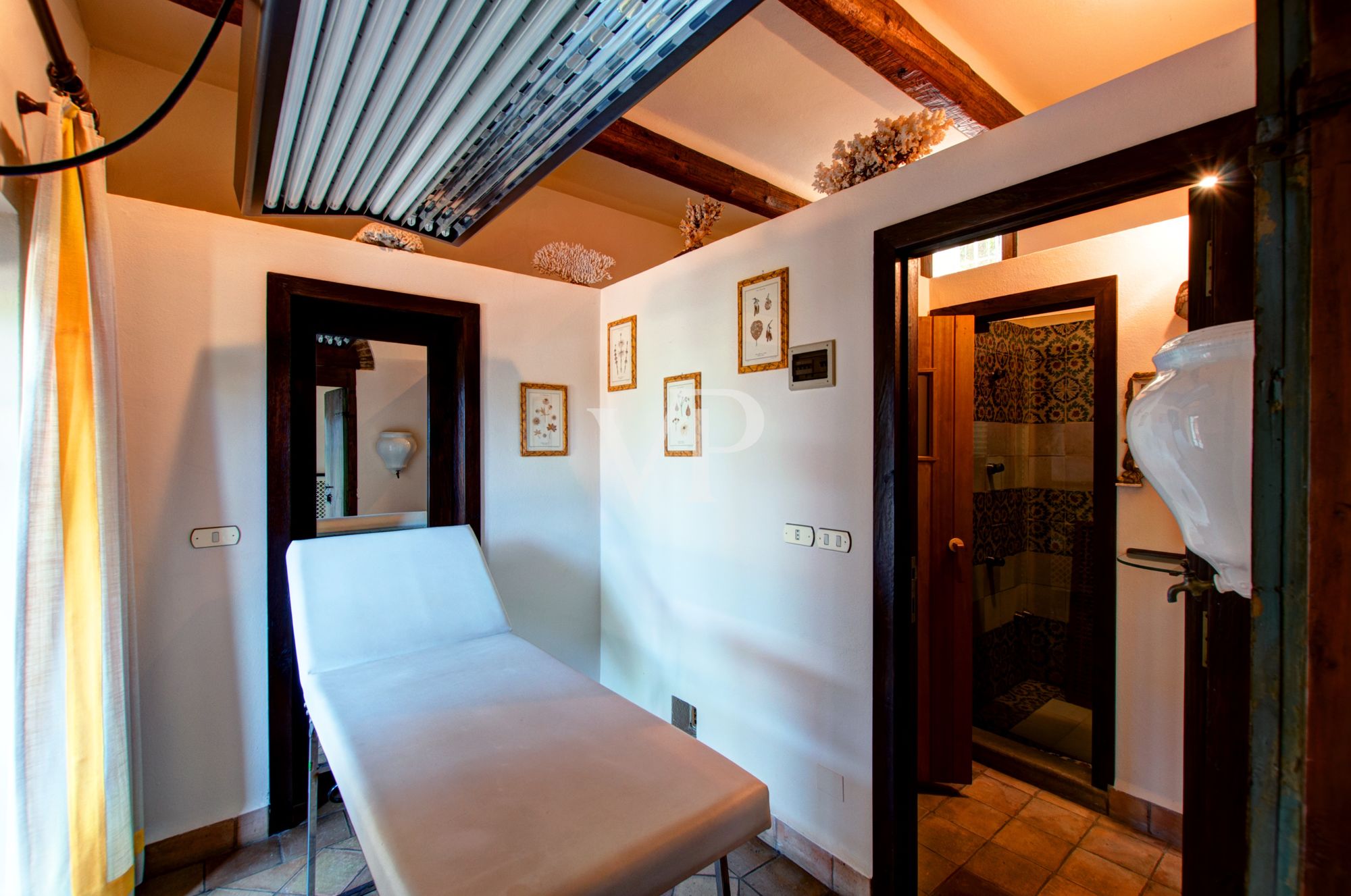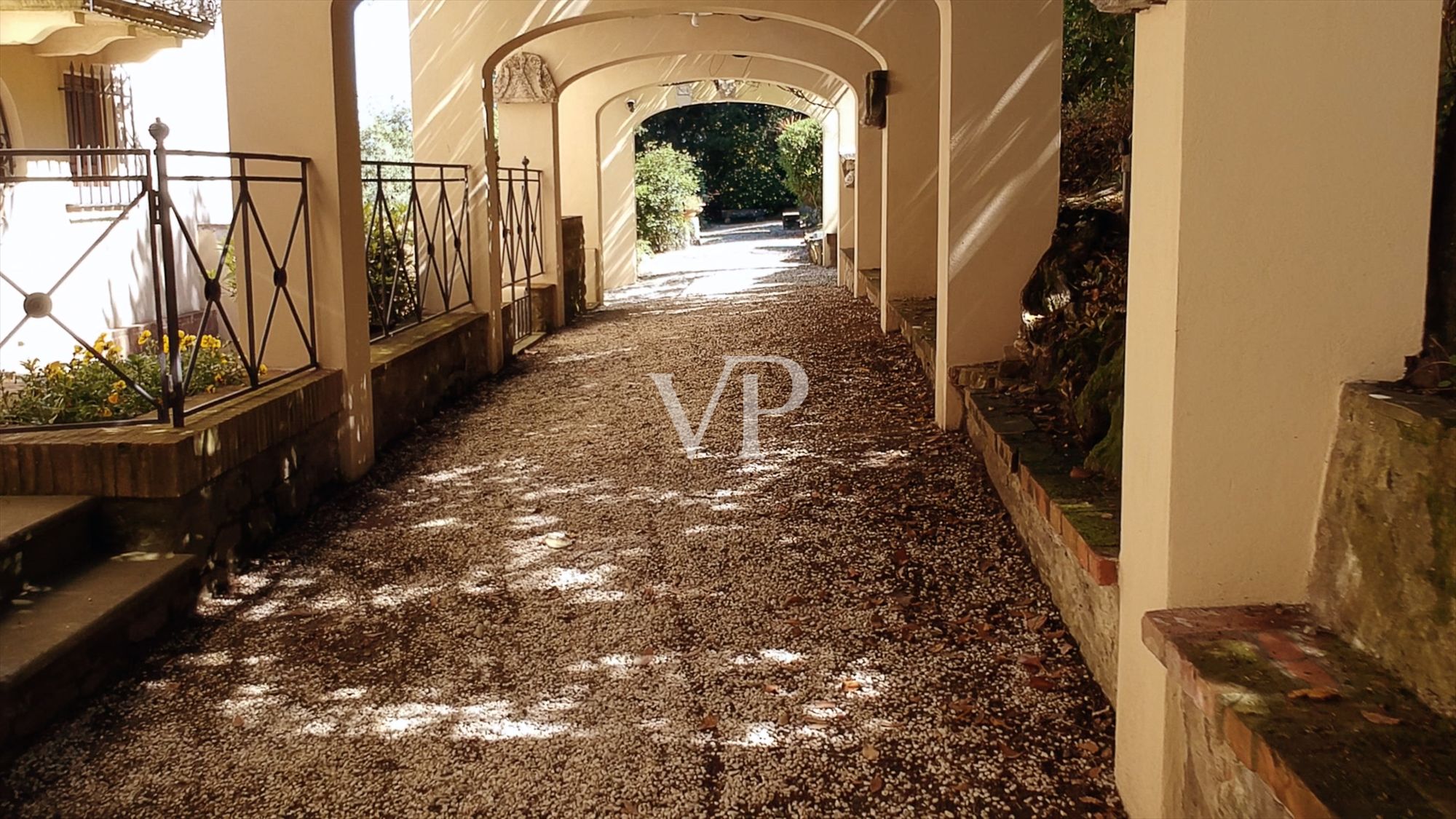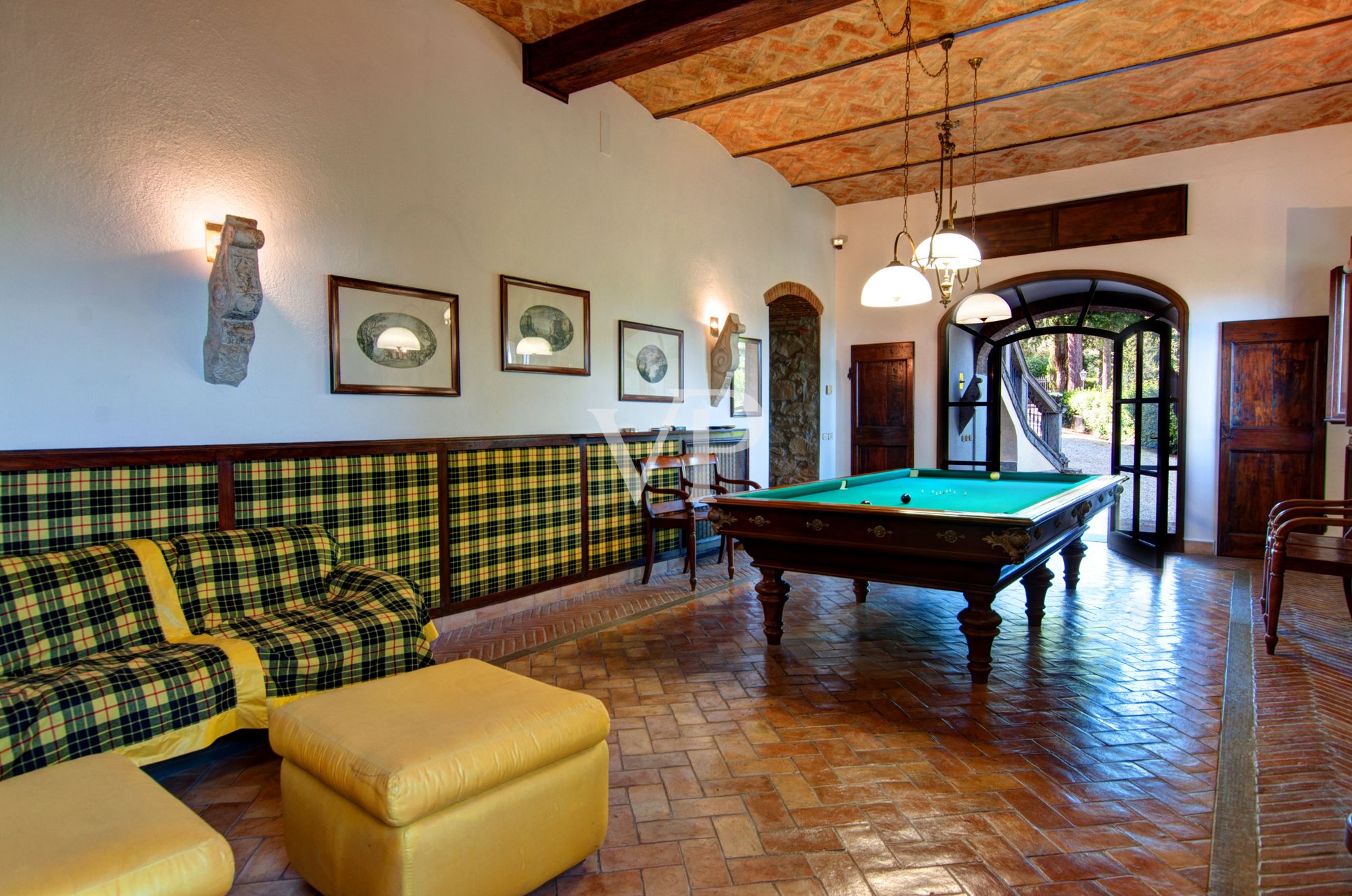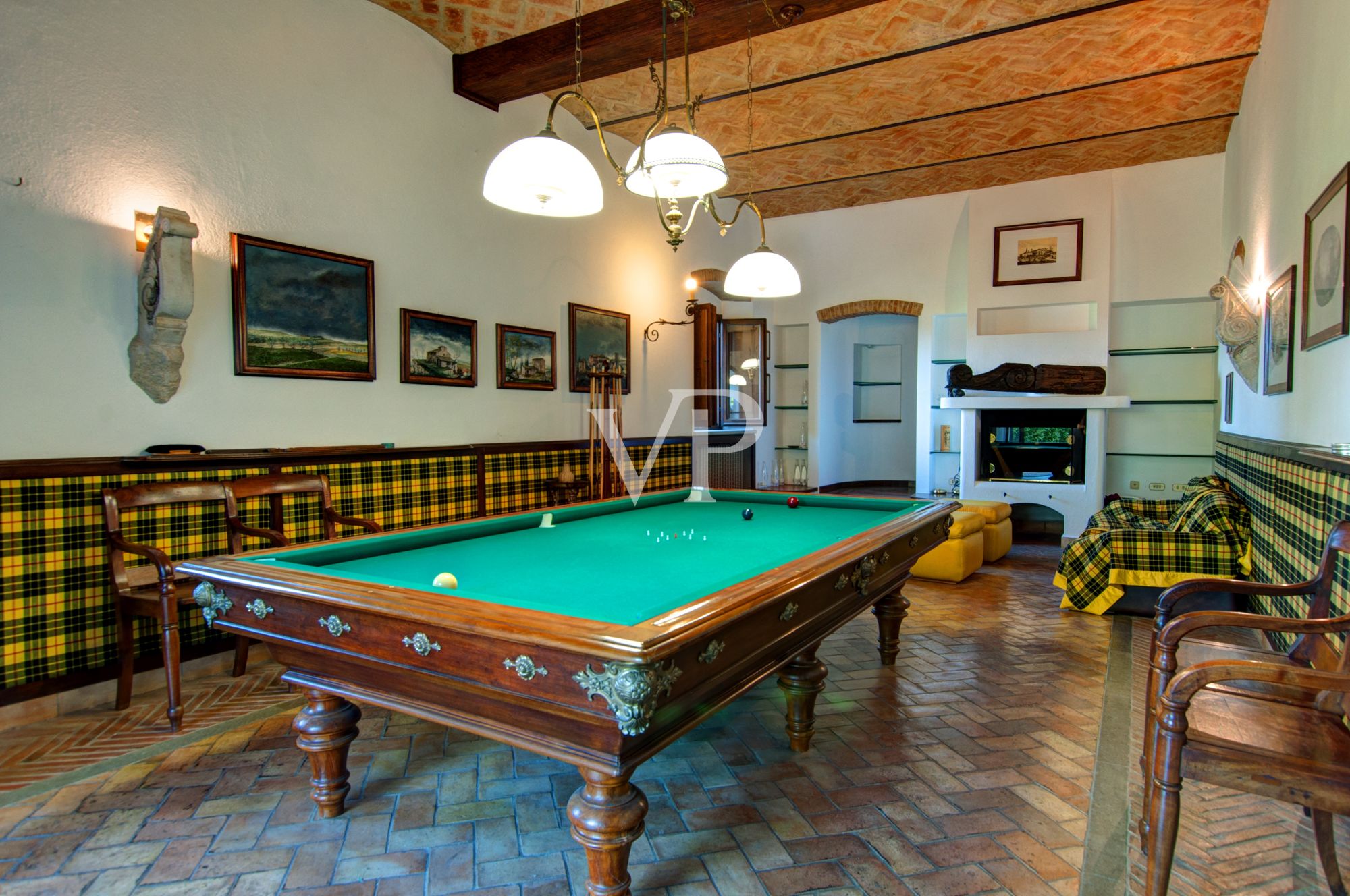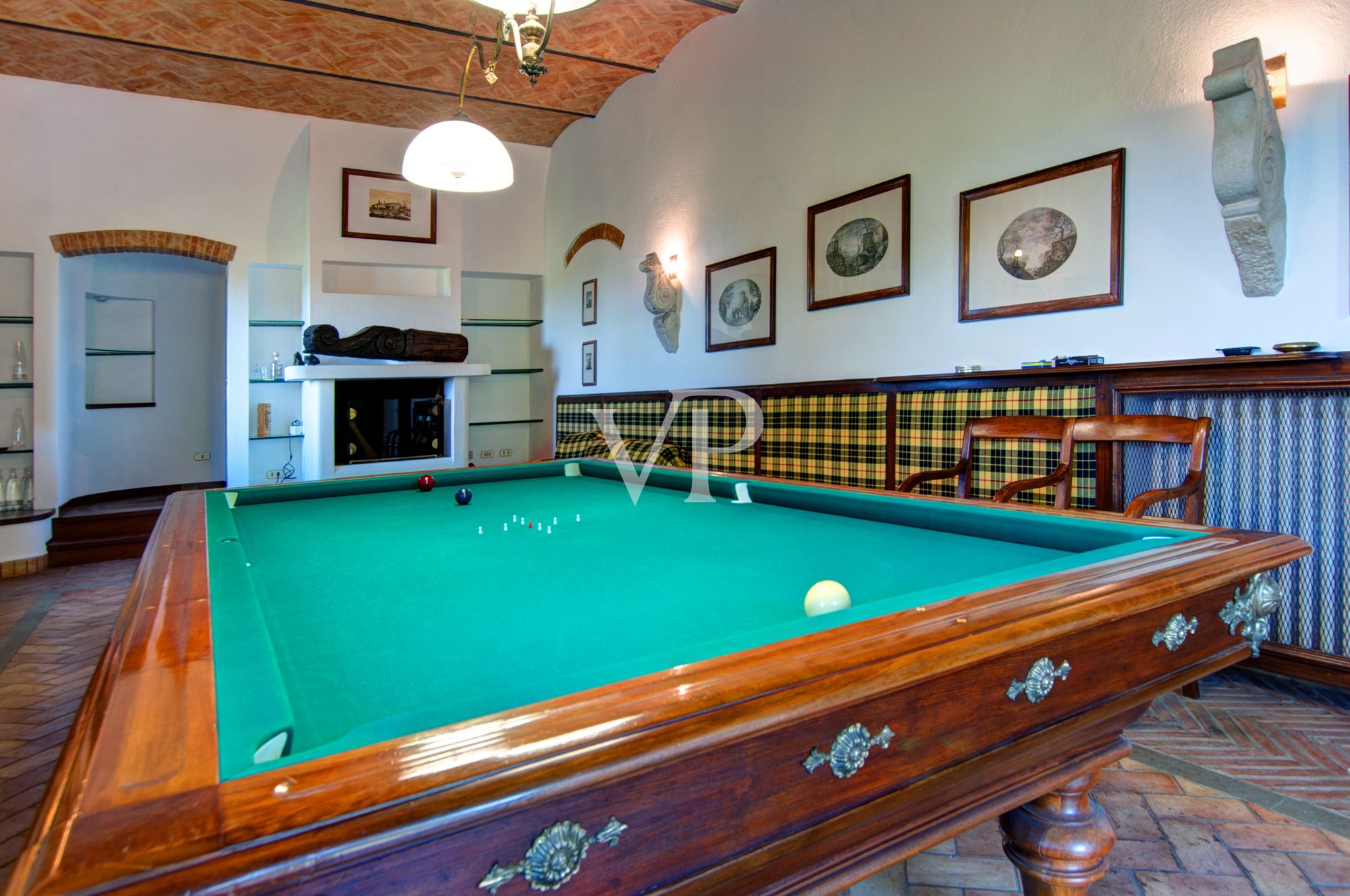Just a few kilometers from the city center, on a hill with a breathtaking view of Arezzo, stands this beautiful 17th-century villa. The building has been carefully restored by a renowned Milanese architect who has skillfully preserved the historic elements while combining them with modern luxury. The villa spans three floors with a total area of approximately 790 square meters and is surrounded by a large garden of about 4000 square meters, ideal for relaxation and admiring the natural beauty of the surrounding hills, including olive groves and vineyards that once inspired Piero della Francesca.
The villa consists of two main parts dating back to the 17th and 18th centuries, which have been conservatively restored by Mariapia Lodesani. On the terrace, ancient sandstone pots from the 18th century harmoniously blend with modern glass and Baroque stone tables. Inside, numerous works of art and stone decorations from archaeological and medieval finds adorn the large salon on the first floor.
Superficie habitable
ca. 790 m²
•
Espacio total
ca. 1.022 m²
•
Superficie del terreno
ca. 4.000 m²
•
Habitaciones
34
•
Precio de compra
1.500.000 EUR
| Número de propiedad | IT23415711 |
| Precio de compra | 1.500.000 EUR |
| Superficie habitable | ca. 790 m² |
| Casa | Casa unifamiliar |
| Comisión | Subject to commission |
| Espacio total | ca. 1.022 m² |
| Ocupación a partir de | Previo acuerdo |
| Habitaciones | 34 |
| Dormitorios | 7 |
| Baños | 9 |
| Año de construcción | 1600 |
Certificado energético
0
25
50
75
100
125
150
175
200
225
250
>250
A+
A
B
C
D
E
F
G
H
164.63
kWh/m2a
F
| Certificado energético | Certificado energético |
| Certificado energético válido hasta | 27.07.2033 |
| Demanda de energía final | 164.63 kWh/m²a |
| Clase de eficiencia energética | F |
| Fuente de energía | Alternativa |
Descripción del edificio
Ubicaciones
Arezzo is a charming city located in the Tuscany region of Italy. It is just a few kilometers from Florence and is known for its rich history, stunning landscape, and cultural treasures.
The city has a long history dating back to Etruscan times and was also an important center during the Renaissance, preserving many traces of its glorious past. In Arezzo, you'll find an abundance of historical buildings, including the impressive Cathedral, the Medici Fortress, and the Palazzo della Fraternita dei Laici.
Arezzo is also renowned for its artistic treasures. The Basilica of San Francesco houses the famous fresco "The Legend of the True Cross" by Piero della Francesca. This masterpiece is a highlight of Renaissance art and a must-visit for art enthusiasts.
The city also boasts a vibrant cultural scene, with music festivals, theater performances, and art exhibitions throughout the year. Arezzo's gastronomic heritage is also noteworthy, with top-notch restaurants serving Tuscan delicacies.
Arezzo is surrounded by a picturesque landscape, perfect for hiking and excursions. The gentle hills, olive groves, and vineyards are typical of the Tuscan countryside and provide an ideal backdrop for relaxation and rejuvenation.
The city has a long history dating back to Etruscan times and was also an important center during the Renaissance, preserving many traces of its glorious past. In Arezzo, you'll find an abundance of historical buildings, including the impressive Cathedral, the Medici Fortress, and the Palazzo della Fraternita dei Laici.
Arezzo is also renowned for its artistic treasures. The Basilica of San Francesco houses the famous fresco "The Legend of the True Cross" by Piero della Francesca. This masterpiece is a highlight of Renaissance art and a must-visit for art enthusiasts.
The city also boasts a vibrant cultural scene, with music festivals, theater performances, and art exhibitions throughout the year. Arezzo's gastronomic heritage is also noteworthy, with top-notch restaurants serving Tuscan delicacies.
Arezzo is surrounded by a picturesque landscape, perfect for hiking and excursions. The gentle hills, olive groves, and vineyards are typical of the Tuscan countryside and provide an ideal backdrop for relaxation and rejuvenation.
Características
In the same residence, on the upper floor, the fusion of antique and modern continues. For example, in the bathroom entirely clad in veined Carrara marble, a polychrome relief and a "fontino" in white marble from the 17th century have been mounted on the wall. Downstairs, in the cellar, you will find wines, a great passion of the owner, and dried flowers, a hobby of the lady of the house. Additionally, a separate room has been dedicated to the game of billiards, with the recovery of a valuable French specimen from the 18th century. The owners' bedroom is furnished with an 18th-century Venetian bed, lacquered and painted with floral motifs in shades of green, while the armchairs are of Baroque origin from the same source. In the study, the library is adorned with a polychrome Sicilian marble frame from the 18th century, while the desk and chair, covered with intricately embroidered fabric, are Tuscan from the 17th century. Facing the library is a distinctive 17th-century fireplace, an example of Tuscan folk art, which was already part of the original structure of the house. Even in the bathroom, clad in Carrara marble, the "fontino" dates back to the 17th century.
Through a series of lowered arches, you enter the dining room, where the table is supported by 18th-century stone columns from Billiemi, an ancient Sicilian town on the brink of extinction, and features an iron and bronze structure. In this part of the house, the architect managed to incorporate elements from the past, such as the decorated tiles on the shelves from an old Dutch fireplace from the 17th century or the pediments of the brazier, made of Tuscan serpentine stone from the 17th century.
Through a series of lowered arches, you enter the dining room, where the table is supported by 18th-century stone columns from Billiemi, an ancient Sicilian town on the brink of extinction, and features an iron and bronze structure. In this part of the house, the architect managed to incorporate elements from the past, such as the decorated tiles on the shelves from an old Dutch fireplace from the 17th century or the pediments of the brazier, made of Tuscan serpentine stone from the 17th century.
